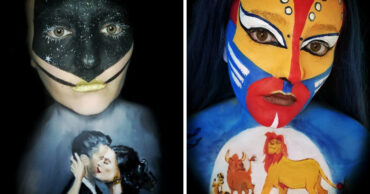There are days when all you want is a good laugh, and then there are days when you’re drawn to the raw beauty, grit, and soul of the past.
That’s why we’ve put together this stunning collection of vintage photos curated from the Facebook page Historic Lens Stories. These images offer a rare glimpse into the lives of people who left an unforgettable mark on the movie and music industries. Keep scrolling and let history speak for itself.
#1
Alain Delon, photographed in the sun-drenched streets of the Côte d’Azur during the 1960s, epitomized the allure of French cinema and the sophistication of European style. By this period, Delon had already become one of France’s most celebrated actors, with a career-defining performance in Plein Soleil (1960), an adaptation of Patricia Highsmith’s The Talented Mr. Ripley. His piercing blue eyes, impeccable style, and charismatic presence established him as a cultural icon, not just in France but internationally. Images like this, capturing him in a relaxed yet elegant moment, reflect the timeless appeal of mid-20th-century French masculinity and the glamour of the Côte d’Azur lifestyle, where cinema, fashion, and leisure converged in an effortlessly stylish tableau.
The 1960s and 1970s were pivotal in Delon’s career, during which he starred in classics such as Le Samouraï (1967), La Piscine (1969), and Le Cercle Rouge (1970). These films, celebrated for their meticulous cinematography and psychological depth, reinforced his reputation as a consummate actor capable of blending intensity, mystery, and charm. Delon’s aesthetic — crisp tailored suits, timeless grooming, and a quiet confidence — became a benchmark for European sophistication. The Côte d’Azur, with its vibrant social scene, sunlit promenades, and cinematic backdrop, served as both a literal and symbolic setting for the elegance, intrigue, and allure that defined his public persona during this era.
Photographs of Alain Delon from this period continue to resonate for their combination of style, charisma, and cinematic history. He represented a golden age of European film, where actors were not only performers but cultural icons embodying fashion, lifestyle, and aspiration. Whether captured strolling along the Riviera or in character on screen, Delon’s presence symbolizes the intersection of artistry, sophistication, and charisma that shaped French cinema and international style. His influence endures today, inspiring filmmakers, photographers, and style enthusiasts alike, preserving the legacy of a true icon of the 1960s and 1970s.
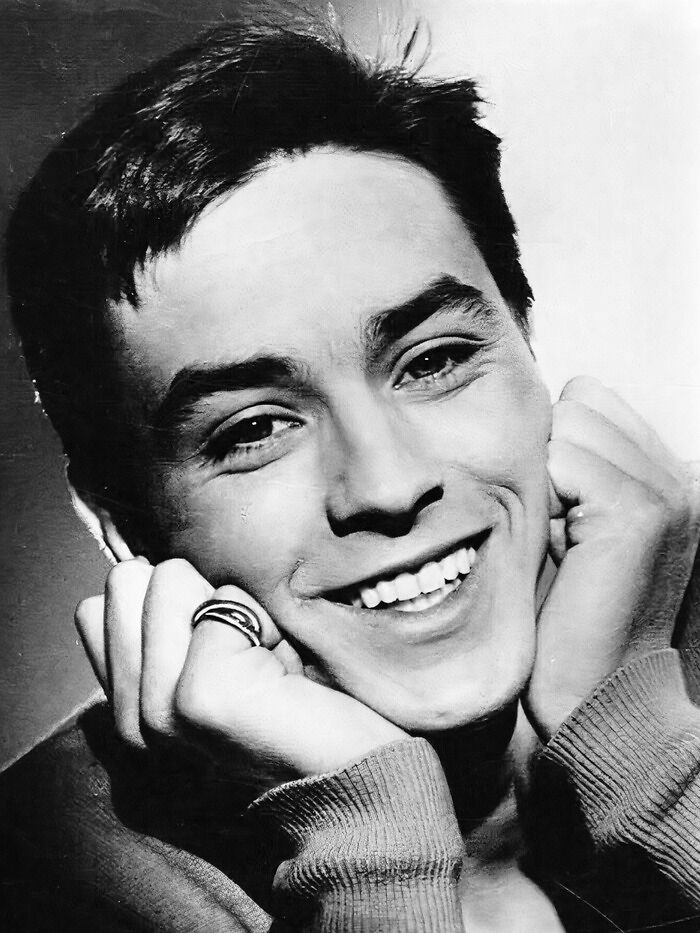
Image source: HistoricLensStories
#2
In 1988, Harrison Ford and Steven Spielberg reunited on the set of Indiana Jones and the Last Crusade, filming across breathtaking locations that ranged from Spain and Italy to Jordan and England. It was the third installment in the Indiana Jones saga, following the global success of Raiders of the Lost Ark (1981) and Temple of Doom (1984). The production blended adventure, archaeology, and emotional storytelling on a grand scale. Spielberg and Ford worked closely to bring new depth to the character of Indiana Jones, presenting him not only as a daring explorer but also as a son reconciling with his past. The addition of Sean Connery as Professor Henry Jones Sr. created a dynamic father-son relationship that became the heart of the film and a defining moment in 1980s cinema.
Filming took place throughout 1988, beginning in May and wrapping by September. The iconic tank chase scene was shot in the Tabernas Desert in Almería, Spain, while the awe-inspiring finale at Petra, Jordan, transformed the ancient Treasury into the mythical temple housing the Holy Grail. The craftsmanship behind the film’s practical effects and set design reflected Spielberg’s commitment to authenticity in an era just before digital effects began to dominate Hollywood. Ford performed many of his own stunts, further cementing his reputation as one of the most committed action stars of his generation. The collaboration between Spielberg and cinematographer Douglas Slocombe gave the film a warm, nostalgic tone, echoing the golden age of adventure serials that inspired the franchise.
Released in May 1989, Indiana Jones and the Last Crusade became both a critical and commercial triumph, grossing nearly $475 million worldwide and winning an Academy Award for Best Sound Editing. More importantly, it restored the emotional core of the series, blending humor, humanity, and heroism. The behind-the-scenes moments from 1988 capture Ford and Spielberg at their creative peak—two artists perfectly in sync, crafting a story that continues to define cinematic adventure decades later.
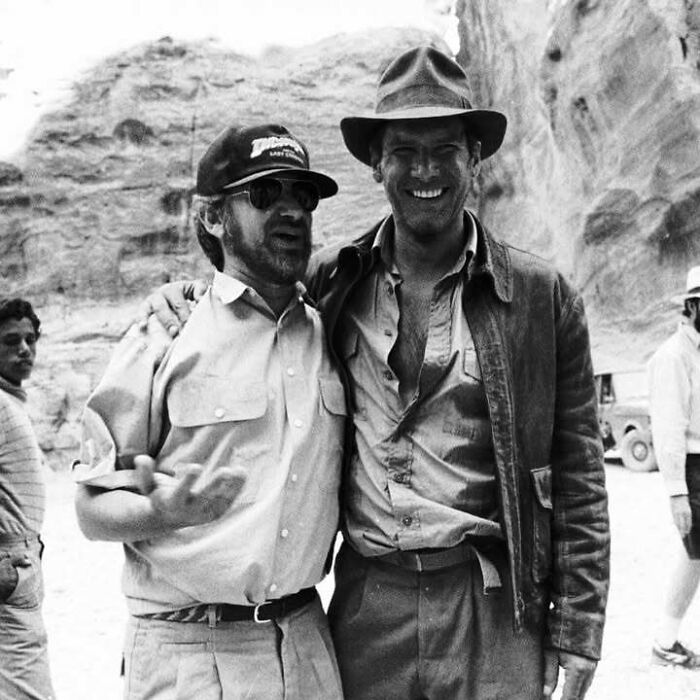
Image source: HistoricLensStories
#3
In 1966, Audrey Hepburn was photographed by the renowned British photographer Terry O’Neill during the production of How to Steal a Million, a sophisticated romantic comedy directed by William Wyler. Filmed primarily in Paris, the movie starred Hepburn as Nicole Bonnet, the daughter of an art forger, alongside Peter O’Toole as a charming thief. O’Neill’s portraits from the set capture Hepburn at the height of her cinematic and fashion influence—elegant, poised, and effortlessly modern. This collaboration between actress and photographer immortalized the glamour of mid-1960s cinema, blending Old Hollywood grace with the youthful energy of the Swinging Sixties.
By the mid-1960s, Audrey Hepburn had already become one of the most beloved actresses in the world, celebrated for performances in Breakfast at Tiffany’s (1961) and My Fair Lady (1964). In How to Steal a Million, her wardrobe, designed by Hubert de Givenchy, reflected the epitome of Parisian chic—sleek silhouettes, wide-brimmed hats, and bold accessories that influenced global fashion trends for years. Terry O’Neill’s candid and stylish approach to photography perfectly complemented Hepburn’s timeless allure, capturing her in moments of quiet confidence and charm. His work helped redefine celebrity portraiture, emphasizing authenticity and modern style over posed glamour.
The film itself, released in August 1966, became a visual celebration of art, fashion, and wit. While How to Steal a Million is remembered as a lighthearted caper, its production coincided with a transformative era in cinema—when traditional Hollywood elegance met the freedom of the new European aesthetic. O’Neill’s images from the set endure as cultural landmarks, preserving Audrey Hepburn not just as an actress, but as a symbol of grace, intelligence, and enduring style. The synergy between Hepburn’s timeless presence and O’Neill’s modern lens created visual history—an eternal snapshot of cinematic sophistication in the golden decade of film.
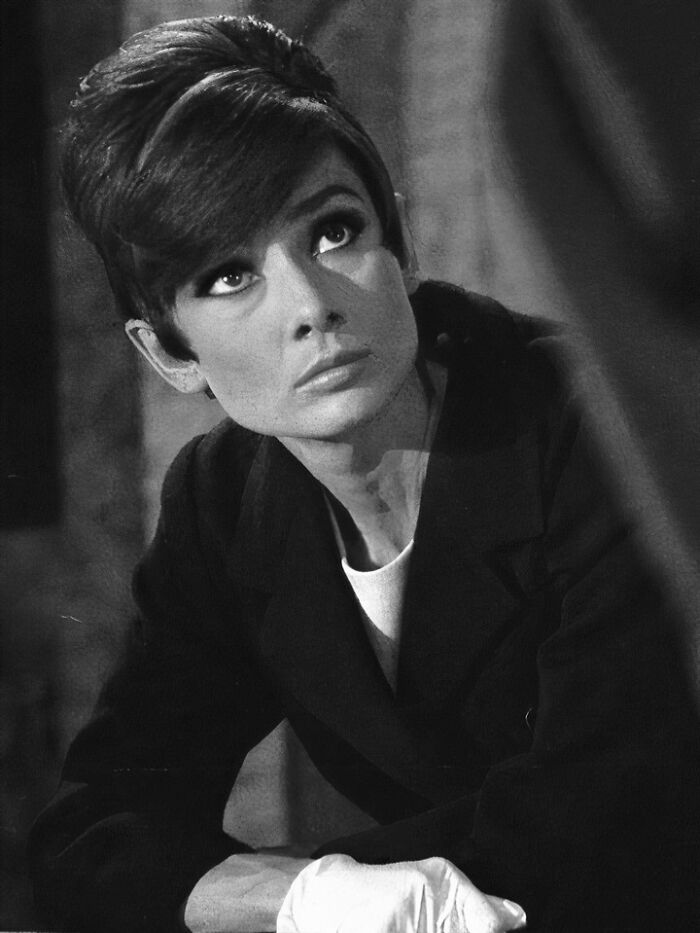
Image source: HistoricLensStories
#4
The Monaco Grand Prix of 1958 stands as one of the most glamorous and defining races in Formula One history. Held on May 18, 1958, the narrow, winding streets of Monte Carlo transformed into a breathtaking stage where speed met sophistication. The event was the second round of the 1958 World Championship and drew elite drivers and glittering spectators from around the world. Maurice Trintignant of France, driving for Cooper-Climax, claimed victory that year, marking his second win at Monaco after his 1955 triumph. It was a race that reflected the shifting era of motorsport — where innovation and daring spirit began to merge with style and international prestige.
The late 1950s marked the golden age of racing glamour, and Monaco was at its heart. The race’s backdrop — the Mediterranean coastline, luxury yachts, and the royal presence of Prince Rainier III and Princess Grace Kelly — turned the event into more than a competition; it was a celebration of art, class, and courage. The 1958 season also introduced the first official Constructors’ Championship, changing the dynamic of racing teams forever. Cars like the Cooper T45 revolutionized design, proving that mid-engine engineering could dominate over traditional front-engine models, reshaping the future of Formula One.
In this era, the Monaco Grand Prix became an emblem of post-war optimism and modern luxury. It was where legends were made, both on and off the track. The crowd included Europe’s aristocracy, film stars, and jet-setters who saw in Monaco the perfect blend of danger and decadence. Every turn through Casino Square and along the harbor captured the essence of 1950s allure — a place where engines roared, champagne flowed, and history was written in speed and style.
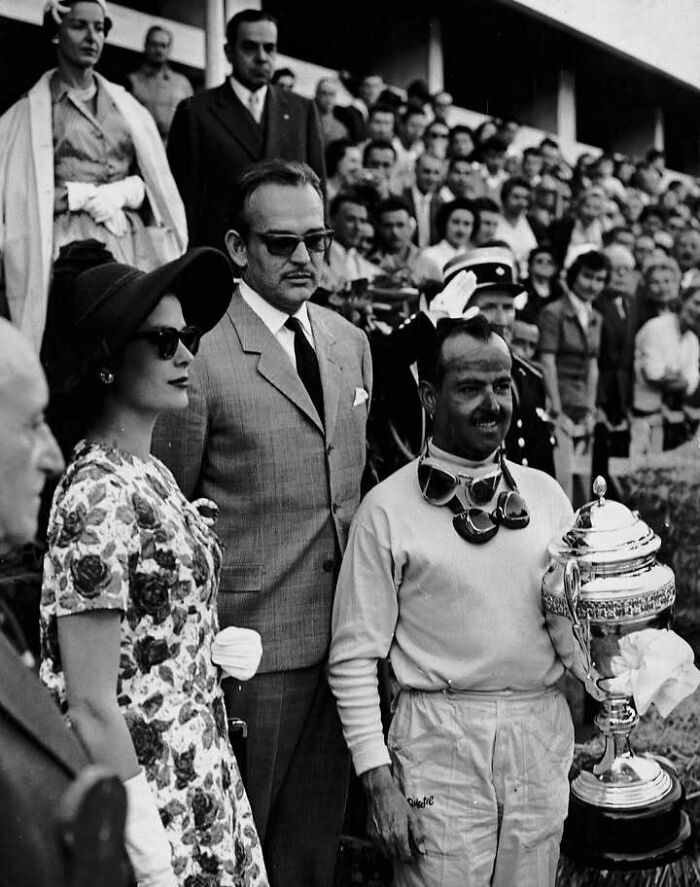
Image source: HistoricLensStories
#5
In 1986, Sarah Jessica Parker and Michael J. Fox were among the most recognizable young stars in Hollywood, both contributing to the energy of the decade’s film and television scene. Sarah Jessica Parker, born in 1965, was building her career with roles in projects like Square Pegs (1982–1983) and later gaining recognition in feature films. By the mid-1980s, she had established herself as a rising actress known for her charisma, style, and ability to capture the spirit of youthful optimism that defined much of the era. Her career trajectory in the late 1980s would open the door to leading roles that set the stage for her eventual breakthrough in the 1990s.
Michael J. Fox, born in 1961, was at the height of his stardom in 1986. After achieving widespread fame with his Emmy-winning role as Alex P. Keaton in Family Ties (1982–1989), he transitioned seamlessly into film, starring in the cultural phenomenon Back to the Future (1985). By 1986, Fox had already solidified his status as one of Hollywood’s most bankable stars, taking on lead roles in films such as Teen Wolf (1985) and The Secret of My Success (1987). His blend of comedic timing, charm, and relatable screen presence made him a favorite among audiences during the mid-to-late 1980s, a period often remembered as his golden era.
Their connection in photographs from 1986 captures the glamour and vitality of young Hollywood at a time when both Parker and Fox symbolized the promise of a new generation of talent. The mid-1980s were marked by vibrant pop culture, blockbuster films, and evolving television, and both stars were central figures within that landscape. Their appearances together represented not only a meeting of two talented performers but also an enduring snapshot of the entertainment industry’s most iconic decade, highlighting the energy, style, and influence of 1980s Hollywood.
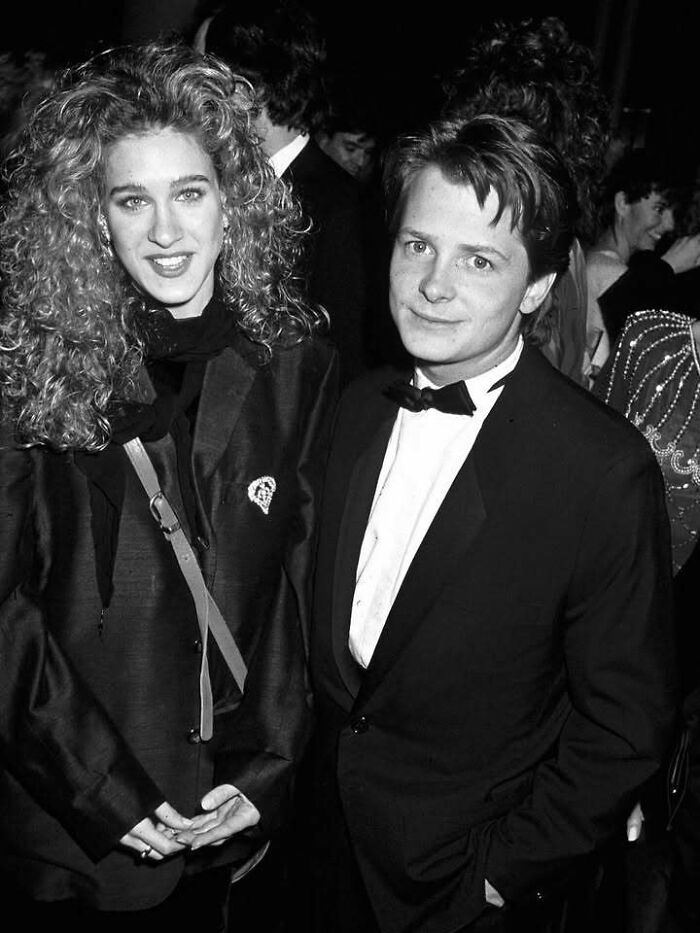
Image source: HistoricLensStories
#6
The 2003 romantic comedy How to Lose a Guy in 10 Days brought Kate Hudson and Matthew McConaughey together in a film that has become a hallmark of early 2000s rom-coms. Directed by Donald Petrie, the movie tells the story of Andie Anderson (Hudson), a magazine writer tasked with writing an article on how to drive a man away in ten days, and Benjamin Barry (McConaughey), an advertising executive who bets he can make a woman fall in love with him in the same timeframe. The film’s clever premise and engaging performances quickly captured audiences, showcasing Hudson’s comedic timing and charm alongside McConaughey’s charismatic, easygoing screen presence. Their chemistry on-screen was widely praised, contributing to the movie’s box office success and cementing it as a staple of the genre.
Filmed in New York City in 2002, How to Lose a Guy in 10 Days was released in February 2003 and became an instant hit, grossing over $177 million worldwide. The film reflects early 2000s romantic comedy conventions, blending humor, romance, and urban settings to appeal to a wide audience. Hudson, who had already achieved acclaim for roles in Almost Famous (2000) and The Skeleton Key (2005), delivered a performance that balanced wit and vulnerability, while McConaughey, emerging as a leading man after films like The Wedding Planner (2001), brought a playful confidence that complemented Hudson’s energy. Their interactions, full of banter, misunderstandings, and charming vulnerability, created memorable cinematic moments that continue to resonate with fans of the genre.
The success of How to Lose a Guy in 10 Days solidified both Hudson and McConaughey as leading figures in romantic comedies and contributed to the era’s flourishing rom-com culture. Beyond its box office performance, the film has had a lasting impact on pop culture, inspiring fashion, dating tropes, and countless references in media over the years. Behind-the-scenes stories often highlight the mutual respect and camaraderie between the actors, which translated into the chemistry so evident on-screen. Today, the film remains a defining example of early 2000s romantic comedies, celebrating lighthearted storytelling, star power, and the timeless appeal of on-screen chemistry.
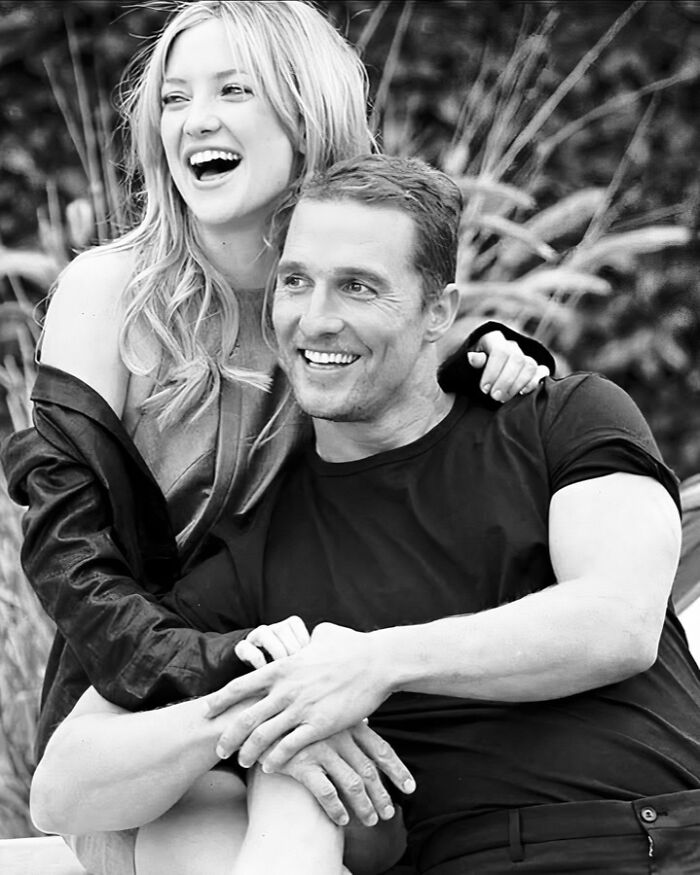
Image source: HistoricLensStories
#7
In 1968, the streets of San Francisco became the stage for one of the most iconic films in cinema history — Bullitt, directed by Peter Yates and starring Steve McQueen and Jacqueline Bisset. Behind the scenes, McQueen, known as the “King of Cool,” embodied the effortless charisma that defined a generation, while Bisset, at the dawn of her international stardom, brought sophistication and depth to her role as Cathy, the woman who humanized McQueen’s tough detective persona. The film was released on October 17, 1968, during a transformative era in American cinema when realism and rebellion began replacing polished studio aesthetics. Its blend of sleek cinematography and raw emotion made Bullitt a landmark of the New Hollywood movement.
Shot on location across San Francisco’s steep hills and vibrant streets, Bullitt broke new ground with its legendary car chase sequence — a cinematic revolution filmed using Mustang GT fastbacks and Dodge Chargers that roared through the city’s neighborhoods at unprecedented speed. This pioneering action scene, captured using real-time footage and minimal stunt doubles, redefined modern filmmaking and set the standard for generations of directors that followed. McQueen, performing much of his own driving, became synonymous with authenticity and fearless artistry. Peter Yates’
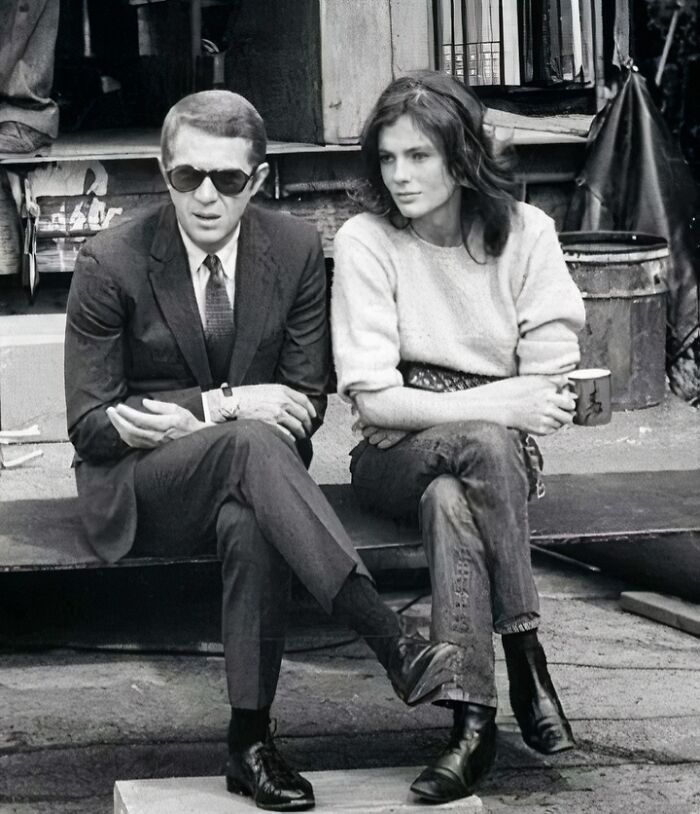
Image source: HistoricLensStories
#8
John Lennon, born on October 9, 1940, in Liverpool, England, remains one of the most influential figures in modern music and culture. As a founding member of The Beatles, Lennon helped revolutionize popular music in the 1960s, shaping the sound of an entire generation with albums like Revolver (1966), Sgt. Pepper’s Lonely Hearts Club Band (1967), and Abbey Road (1969). Known for his wit, intelligence, and incisive songwriting, Lennon paired melody with profound social commentary, exploring themes of love, peace, and human rights. His signature round glasses, casual style, and unmistakable voice became instantly recognizable symbols of a cultural movement that transformed music, fashion, and youth identity worldwide.
After The Beatles disbanded in 1970, Lennon embarked on a solo career that solidified his status as a global icon. Songs like Imagine (1971) and Instant Karma! (1970) combined personal reflection with universal messages, reflecting his commitment to peace activism and political awareness. Lennon’s work during the early 1970s also intersected with social movements, including anti-war protests and campaigns for civil rights, earning him recognition not just as an artist, but as a cultural and political influencer. His relationship with Yoko Ono further shaped his artistry, bringing avant-garde experimentation and personal activism into the mainstream.
Today, Lennon’s legacy endures through music, art, and memorials such as the John Lennon Wall in Prague, which celebrates his messages of love, peace, and creativity. As fans worldwide commemorate milestones like what would have been his 80th birthday in 2020, his influence continues to inspire generations of musicians, writers, and activists. Lennon’s combination of talent, vision, and humanity ensures that his contributions to music and culture remain timeless, with his songs, quotes, and iconic imagery circulating widely across social media and popular culture, reminding the world of the enduring power of imagination and hope.
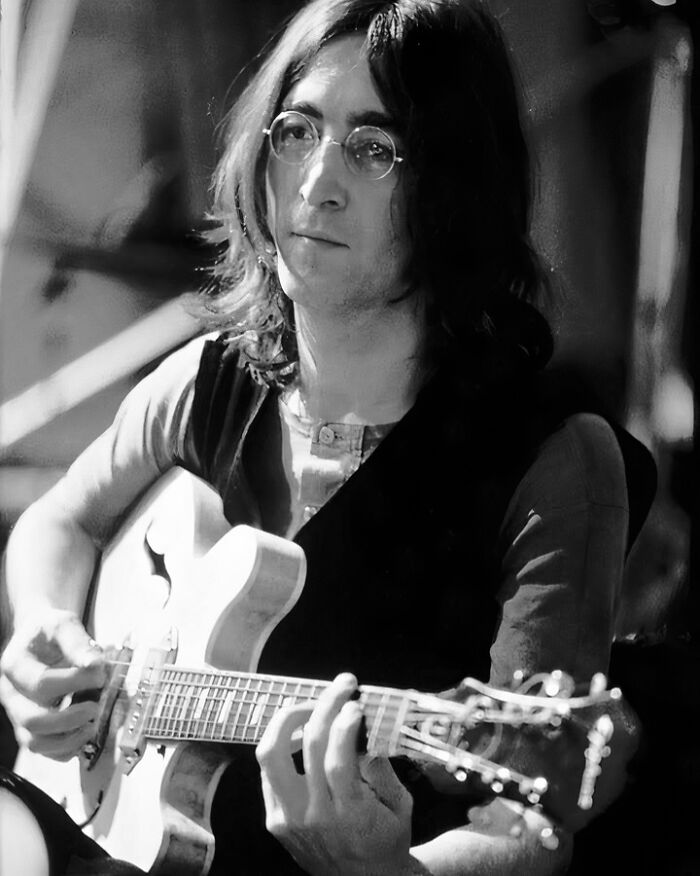
Image source: HistoricLensStories
#9
Released in May 2002, Unfaithful became one of the defining psychological dramas of the early 21st century, directed by Academy Award–nominated filmmaker Adrian Lyne—renowned for his explorations of passion, morality, and desire in films like Fatal Attraction (1987) and Indecent Proposal (1993). Starring Diane Lane and Richard Gere, the movie captured the emotional turbulence of a seemingly perfect suburban marriage unraveling under the weight of secrecy and temptation. Filmed primarily in New York and New Jersey between 2001 and early 2002, it mirrored the early 2000s era of domestic thrillers that blurred the line between romance and suspense, highlighting the fragility of trust in modern relationships.
Diane Lane’s performance as Connie Sumner earned her critical acclaim and an Academy Award nomination for Best Actress in 2003, marking a peak in her career that began in the late 1970s with films like A Little Romance (1979). Richard Gere, already an established Hollywood icon from Pretty Woman (1990) and An Officer and a Gentleman (1982), brought a layered portrayal of Edward Sumner—a husband torn between love and betrayal. Their chemistry on screen added realism to the story’s moral tension, making Unfaithful both an emotional and cinematic landmark. The film’s release coincided with a cultural moment when audiences were drawn to character-driven dramas exploring human vulnerability and ethical dilemmas.
With a production budget of approximately $50 million and a worldwide gross surpassing $120 million, Unfaithful became one of 2002’s most talked-about adult dramas. The film’s themes of passion, guilt, and consequence have kept it relevant in cinematic discussions for over two decades. Set against a haunting score by composer Jan A.P. Kaczmarek and captured through Lyne’s moody, intimate cinematography, Unfaithful remains a powerful exploration of choices, consequences, and the delicate line between love and loss—cementing its place in early-2000s Hollywood history.
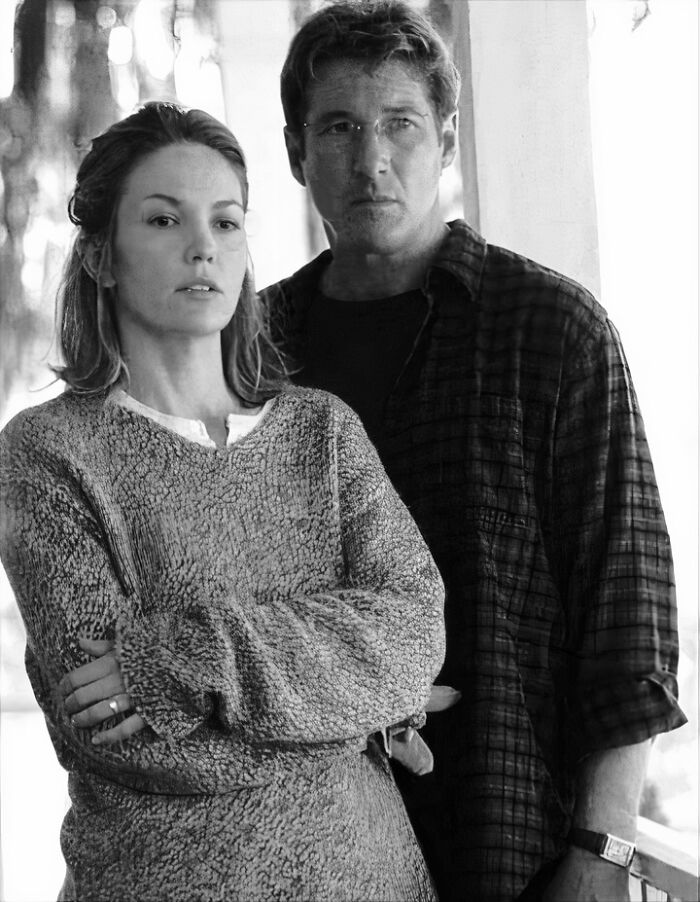
Image source: HistoricLensStories
#10
Mick Jagger and Linda Eastman, photographed together in 1966, capture the vibrant spirit of the Swinging Sixties, a transformative era in music, fashion, and culture. By this time, Jagger had solidified his status as the charismatic frontman of The Rolling Stones, a band that redefined rock and roll with hits like “(I Can’t Get No) Satisfaction” (1965) and “Paint It Black” (1966). Linda Eastman, later famously known as Linda McCartney, was already an accomplished photographer, documenting key figures of the music scene and the rise of British rock. Their encounter in 1966 reflects the intersection of rock music, celebrity culture, and artistic expression that defined London’s iconic music scene during the mid-1960s, a period often celebrated for its creativity, social change, and cultural experimentation.
The year 1966 was pivotal for both The Rolling Stones and the broader music world. The band was touring internationally, captivating audiences across Europe and North America with their rebellious style and electrifying performances. Mick Jagger, along with bandmates Keith Richards, Brian Jones, Charlie Watts, and Bill Wyman, became emblematic of the British Invasion, a movement that brought UK rock and pop music to global prominence from 1964 onwards. Meanwhile, Linda Eastman’s photography captured behind-the-scenes glimpses of rock legends, immortalizing the era’s fashion trends, psychedelic aesthetics, and cultural icons. Their worlds briefly intersected at a moment when music, media, and youth culture converged, creating enduring images that symbolize freedom, creativity, and the transformative power of rock and roll.
Photographs like this one are more than just portraits; they are historical artifacts that document a revolutionary moment in 20th-century culture. The 1960s saw the rise of psychedelic art, the hippie movement, and the redefinition of celebrity, with figures like Jagger and Eastman at the forefront. This period not only shaped the sound and style of contemporary rock music but also influenced fashion, photography, and visual storytelling worldwide. Today, such images continue to resonate, reminding audiences of the energy, optimism, and radical creativity that defined the mid-1960s, solidifying both Jagger’s legendary status and Eastman’s role as a pioneering observer of one of music history’s most iconic decades.
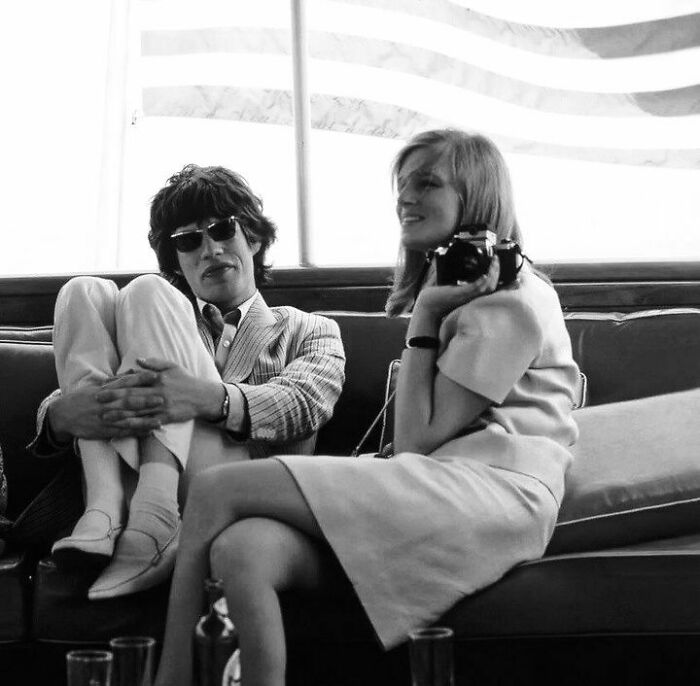
Image source: HistoricLensStories
#11
Photographed by Antonin Kratochvil in 1997, the image captures Bob Dylan during a profound creative resurgence that would culminate in Time Out of Mind, released on September 30, 1997. The album marked Dylan’s first collection of original material in seven years and was recorded at the Teatro in Oxnard and Criteria Studios in Miami under the atmospheric production of Daniel Lanois. The sessions were steeped in mood—low lighting, vintage microphones, and echo-laden rooms that reflected the haunted introspection of the songs themselves. At 56, Dylan was reflecting not on endings, but on the strange, echoing persistence of life after love, turning personal solitude into a universal meditation.
The late 1990s were a pivotal cultural moment: rock veterans were either fading or reinventing themselves, and Dylan’s return felt almost mythic. Critics and fans alike recognized Time Out of Mind as a late-career masterpiece, one that revived his reputation after years of uneven releases. The album went on to win three Grammy Awards, including Album of the Year in 1998, and signaled a new phase of creativity that continues into the present day. Songs like “Love Sick,” “Not Dark Yet,” and “Trying to Get to Heaven” carried the smoky resonance of blues and the lyrical weight of an artist reckoning with time itself.
The portrait Kratochvil shot—a grainy, shadowed image often used in the album’s promotional materials—became emblematic of this era: Dylan as a spectral figure at the crossroads of mortality and endurance. Its visual language echoed the album’s sound: timeless, weathered, and introspective. Today, Time Out of Mind stands not only as a cornerstone of Dylan’s middle period but as a defining record of late 20th-century American music—a testament to reflection, resilience, and the poetry of growing older without losing fire.
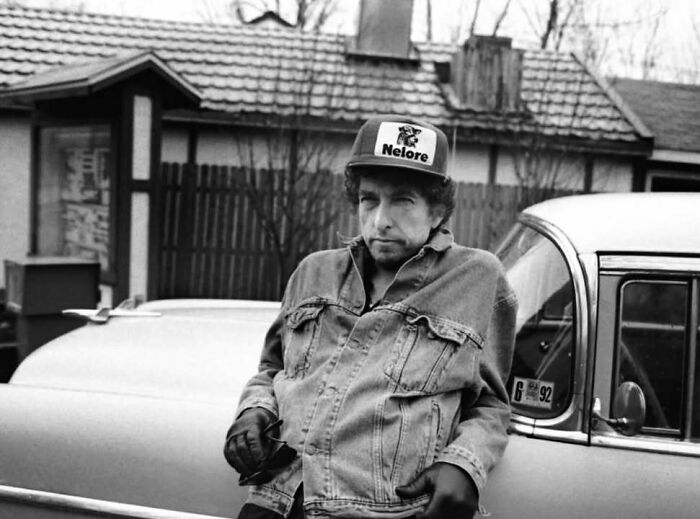
Image source: HistoricLensStories
#12
In 1972, the BBC brought to life George Bernard Shaw’s witty and satirical play The Millionairess, first written in 1936, with Dame Maggie Smith dazzling as Epifania Ognisanti di Parerga—a wealthy, imperious heiress whose sharp tongue and superior manner dominate every room she enters. The production was part of the BBC’s golden age of televised theatre, when the network sought to make classic plays accessible to a broader audience. Smith’s portrayal captured the biting humor and social irony that Shaw intended, reflecting the playwright’s ongoing critique of class divisions and the absurdity of wealth without purpose. Her commanding performance became a masterclass in blending comedy with character depth.
The play itself holds an important place in British theatre history, illustrating Shaw’s fascination with the moral and emotional complications of privilege in the early twentieth century. Written during the interwar period and first staged in 1940 at London’s New Theatre, The Millionairess explored how power and money distort human relationships—an idea that resonated deeply with audiences facing post-war austerity. By the time the BBC adapted it for television in the early 1970s, Britain was once again re-examining social mobility and economic inequality, making Smith’s sharp, sophisticated interpretation both timely and timeless.
Maggie Smith’s portrayal in The Millionairess foreshadowed the grand hauteur she would later embody as Violet Crawley, the Dowager Countess of Grantham in Downton Abbey (2010–2015). Both characters were commanding women from aristocratic backgrounds who used wit, intelligence, and impeccable poise as their weapons of influence. The connection between Epifania and the Dowager Countess demonstrates the enduring nature of Smith’s artistry—her ability to evolve with time while maintaining the essence of theatrical excellence. Her 1972 performance remains a hidden gem in her distinguished career, bridging classic theatre and modern television legacy.
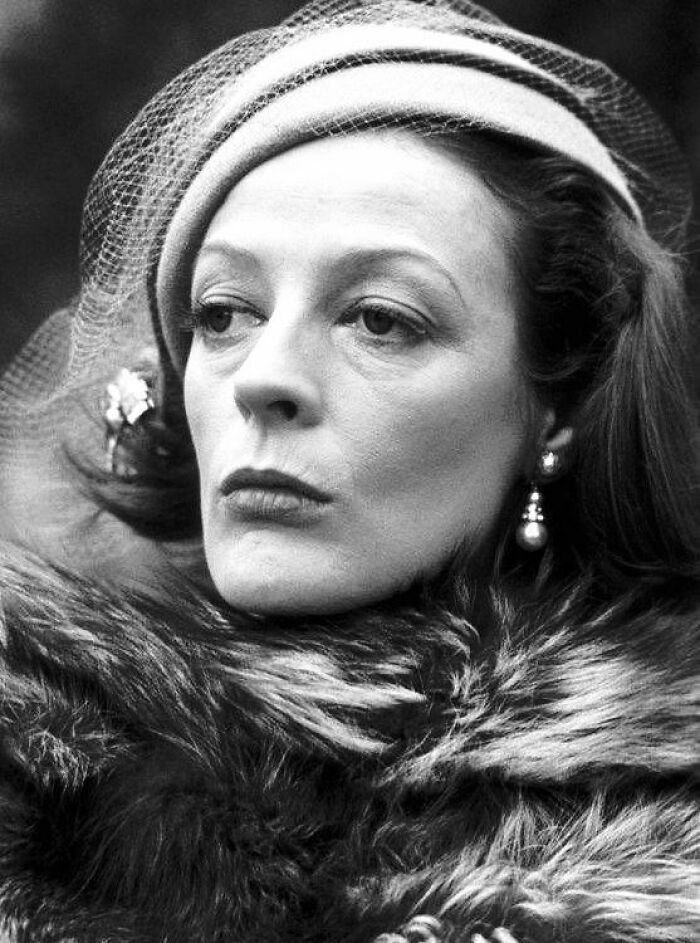
Image source: HistoricLensStories
#13
Christy Turlington photographed in New York City in 1993 by Arthur Elgort captures the essence of an era when fashion photography was shifting toward a more natural and spontaneous style. Turlington, born in 1969 in California, had risen to international fame in the late 1980s and early 1990s as part of the “Big Six” supermodels alongside Naomi Campbell, Cindy Crawford, Linda Evangelista, Claudia Schiffer, and Kate Moss. By 1993, she was at the height of her career, balancing high-fashion campaigns with runway appearances for designers like Calvin Klein, Chanel, and Versace. Her serene beauty, elegant features, and calm presence made her a favorite for photographers who wanted to capture sophistication without artifice.
Arthur Elgort, renowned for bringing a fresh, documentary-like approach to fashion photography, had a long-standing collaboration with Turlington. Known for shooting on location and favoring movement over stiff studio poses, Elgort helped define the look of 1990s fashion editorials. In New York, against its bustling urban backdrop, he often placed models in real-life settings, blending glamour with authenticity. This style mirrored the cultural shifts of the early ’90s, when fashion sought to balance high glamour with everyday accessibility. Turlington’s natural elegance and poise aligned perfectly with this vision, making her one of the defining faces of the decade.
The early 1990s also marked a transitional moment in fashion itself. The excess and boldness of the 1980s were giving way to minimalism, with designers like Calvin Klein and Helmut Lang championing sleek, understated aesthetics. Turlington became the embodiment of this new mood, appearing in campaigns and magazines that celebrated clean lines, neutral palettes, and timeless sophistication. Her work in 1993 not only solidified her legacy as one of the greatest supermodels but also helped shape the visual identity of the era. Today, images like Elgort’s New York series stand as iconic representations of the golden age of supermodels and the enduring influence of 1990s fashion photography.

Image source: HistoricLensStories
#14
In 1980, Meryl Streep earned her very first Academy Award, taking home the Oscar for Best Supporting Actress for her moving performance in Kramer vs. Kramer (1979). The film, released on December 19, 1979, became both a critical and box office triumph, exploring the realities of divorce, parenthood, and personal growth at a time when American society was undergoing major cultural shifts. Streep’s portrayal of Joanna Kramer, a mother torn between her personal independence and her bond with her child, was widely praised for its depth and authenticity. Her role not only resonated with audiences but also showcased the new wave of emotionally raw, naturalistic performances that defined Hollywood cinema in the late 1970s.
Directed by Robert Benton and co-starring Dustin Hoffman, Kramer vs. Kramer went on to sweep the 52nd Academy Awards in April 1980. It won five Oscars in total: Best Picture, Best Director, Best Actor for Hoffman, Best Adapted Screenplay, and Best Supporting Actress for Streep. The film became a cultural landmark, sparking conversations about gender roles, custody battles, and the evolving concept of family in modern America. With divorce rates rising sharply in the 1970s, the story reflected the social realities of the era, making it not only a cinematic success but also a cultural mirror.
For Streep, this milestone marked the beginning of one of the most celebrated careers in film history. Just two years later, she would win the Academy Award for Best Actress for Sophie’s Choice (1982), solidifying her reputation as a master of her craft. By the time she achieved her record-breaking 21 Oscar nominations in the decades that followed, her win in 1980 remained a reminder of her early brilliance and the moment Hollywood recognized a talent that would define generations. The legacy of Kramer vs. Kramer continues to endure, standing as a timeless example of storytelling, artistry, and the transformative power of film.
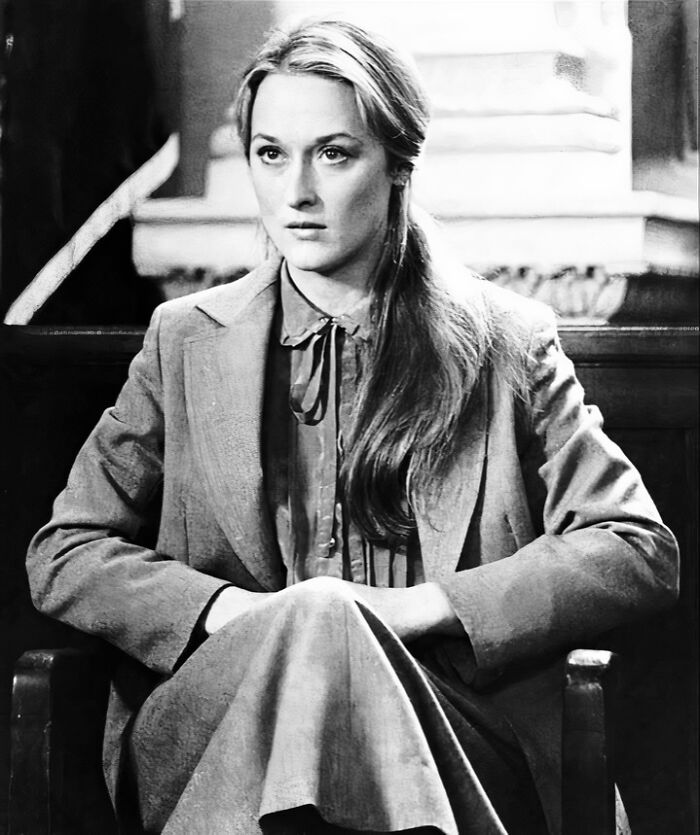
Image source: HistoricLensStories
#15
In 1985, Peter Weir’s Witness brought together Harrison Ford, Kelly McGillis, and young Lukas Haas in a film that combined crime drama with a striking exploration of cultural contrasts. Set between urban Philadelphia and the rural Amish countryside of Pennsylvania, the story follows detective John Book (played by Ford) as he protects a young Amish boy, Samuel Lapp (Haas), who witnesses a crime. Kelly McGillis portrays Rachel, Samuel’s widowed mother, and her restrained relationship with Book provides the emotional center of the film. The combination of suspense, romance, and cultural tension made Witness one of the most acclaimed films of the 1980s.
For Harrison Ford, Witness was a career milestone. Already a global star from the Star Wars and Indiana Jones franchises, this role demonstrated his dramatic range and earned him his only Academy Award nomination for Best Actor. Lukas Haas, just eight years old during filming, delivered a performance of remarkable authenticity, embodying the innocence and strength of his character. Kelly McGillis, who had only recently begun her film career, became a breakout star, praised for her nuanced portrayal of Rachel. The film also earned Peter Weir, an acclaimed Australian director, widespread recognition in Hollywood, paving the way for his later successes such as Dead Poets Society (1989) and The Truman Show (1998).
Upon its release in February 1985, Witness was both a critical and commercial success, earning eight Academy Award nominations and winning two, including Best Original Screenplay and Best Film Editing. Its depiction of Amish culture was both respectful and groundbreaking for mainstream cinema, offering audiences a glimpse into a community rarely portrayed on screen. The set photographs of Ford, McGillis, and Haas capture the unique collaboration that gave the film its lasting power. Nearly four decades later, Witness remains celebrated not only as a tense thriller but also as a deeply human story of connection, morality, and the search for peace in a violent world.
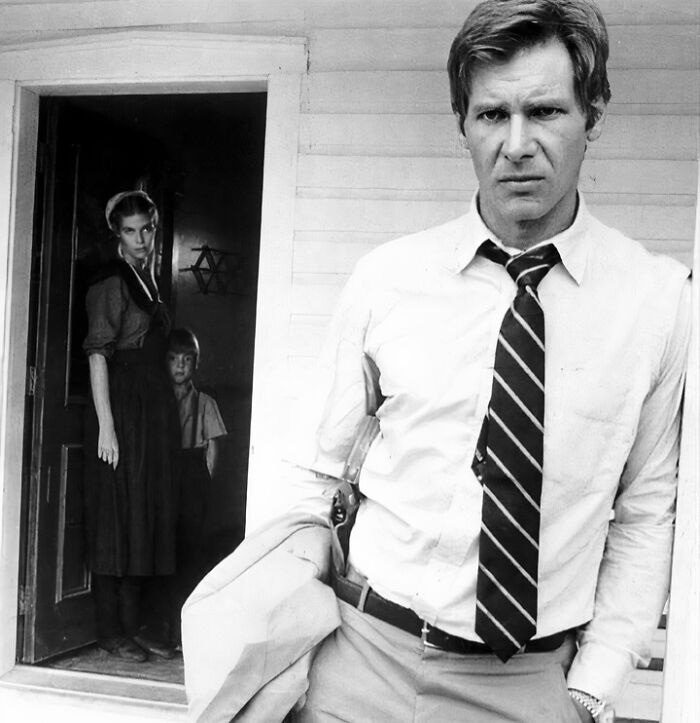
Image source: HistoricLensStories
#16
Claudia Cardinale and Marcello Mastroianni shared the screen in Federico Fellini’s visionary masterpiece 8½, filmed between 1962 and early 1963 at the legendary Cinecittà Studios in Rome. The film, released in April 1963, became an emblem of Italian postwar cinema, reflecting the brilliance and creative turbulence of the director himself. Mastroianni portrayed Guido Anselmi, a celebrated filmmaker lost in a fog of artistic doubt and memory, while Cardinale embodied the idealized woman of his imagination — a symbol of purity, inspiration, and unattainable beauty. Their scenes together captured the essence of Fellini’s dreamlike storytelling, where fantasy and reality merged in poetic harmony.
Set against the backdrop of Italy’s cinematic golden age, 8½ was a turning point in global film history, blending psychological introspection with surreal visual imagery. Fellini’s signature black-and-white aesthetic, combined with Nino Rota’s haunting score, created an atmosphere of timeless elegance. Cardinale’s role elevated her to international stardom, confirming her status as one of Europe’s most magnetic actresses of the 1960s, while Mastroianni solidified his reputation as the ultimate Italian leading man — sophisticated, melancholic, and effortlessly charismatic. The chemistry between the two reflected both the glamour and the complexity of the Italian cinema of that era, bridging artistic experimentation and mainstream allure.
Upon its release, 8½ was met with global acclaim, earning the Academy Award for Best Foreign Language Film and inspiring generations of filmmakers from Martin Scorsese to Pedro Almodóvar. The collaboration between Fellini, Mastroianni, and Cardinale symbolized the creative freedom and modernism of Italian neorealism’s evolution into a more psychological and personal cinema. Even today, their work continues to be studied for its innovative narrative structure and visual storytelling. The film remains not only a pillar of cinematic art but also a timeless reflection of human creativity, identity, and the eternal quest for inspiration.
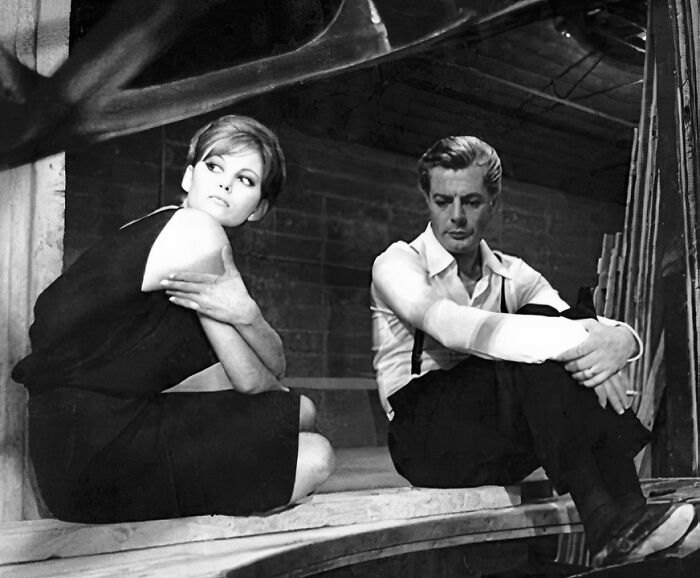
Image source: HistoricLensStories
#17
This 1997 photograph of Mark Wahlberg and Gwyneth Paltrow captures two rising Hollywood stars at the height of their late-’90s fame—a time when both were transitioning from early career success to full-fledged superstardom. However, their earlier collaboration came in The Truth About Charlie development years later; in 1996–97, Wahlberg and Paltrow were building reputations in very different but equally powerful ways. Paltrow, fresh from acclaimed performances in Emma (1996) and Sliding Doors (1998), was redefining the image of the modern screen actress—sophisticated, introspective, and fashion-forward—while Wahlberg was emerging from his early “Marky Mark” persona into serious dramatic territory following his breakthrough in Boogie Nights (1997).
The late 1990s marked a defining era in Hollywood’s youth culture, with style and attitude reflecting the changing face of stardom. Wahlberg, photographed here in his sharp, confident tone, represented the new wave of American masculinity—gritty yet refined, carrying the streetwise energy that made him relatable. Paltrow, by contrast, embodied timeless grace with minimalist fashion and quiet intelligence, soon earning her Oscar for Shakespeare in Love (1998). The chemistry between the two captured the aesthetic of that decade: effortless, slightly rebellious, and deeply cinematic. Their photo symbolized the intersection of two artistic paths shaped by ambition, image reinvention, and the expanding world of ’90s celebrity culture.
By 1997, both actors had become cultural icons in their own right, representing a generation bridging old Hollywood glamour and modern authenticity. The photograph stands as a nostalgic time capsule from an era when film stars were also fashion influences and symbols of a new creative freedom. It reflects not only their personal transformations but the broader evolution of the entertainment industry in the late 20th century—where charisma, individuality, and image redefined what it meant to be a star in the modern age.
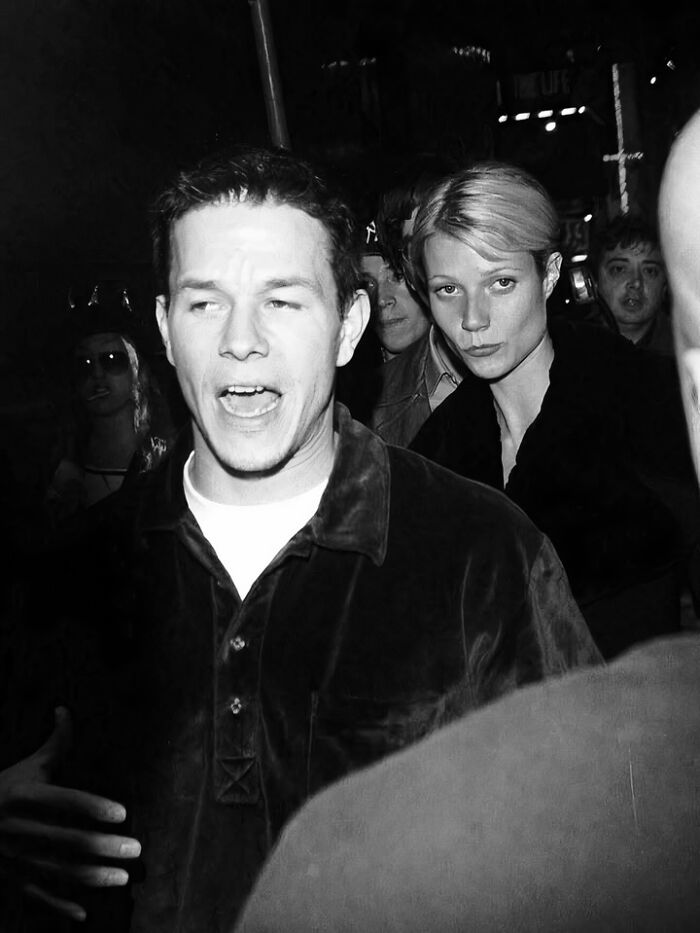
Image source: HistoricLensStories
#18
In 1985, Explorers brought together three young talents—River Phoenix, Ethan Hawke, and Jason Presson—in a film that captured the boundless imagination of 1980s science fiction cinema. Directed by Joe Dante, known for Gremlins (1984), the movie told the story of three boys who build a homemade spacecraft after receiving mysterious visions in their dreams. Though not a major box-office hit upon release, Explorers became a cult favorite for its blend of wonder, humor, and heartfelt storytelling, reflecting the era’s fascination with adventure and childhood curiosity. Released on July 12, 1985, just weeks after Back to the Future, it found new life in later years through home video and cable television, resonating with audiences who grew up dreaming of galaxies beyond their backyard.
River Phoenix, only 14 years old at the time, gave an early glimpse of his remarkable talent as the brainy and sensitive Wolfgang Müller. His co-star Ethan Hawke, making his film debut as Ben Crandall, displayed the natural charm and emotional depth that would define his later career. Jason Presson rounded out the trio as Darren Woods, the streetwise friend whose courage helped bring their dream to life. The chemistry between the three young actors gave Explorers an authenticity that elevated its fantastical premise. Beneath its special effects and extraterrestrial adventure, the film captured the innocence and creativity of youth—an ode to the spirit of discovery that defined 1980s family cinema.
Over time, Explorers gained a loyal following among nostalgic fans of 1980s movies. Its imaginative visuals, practical effects, and Jerry Goldsmith’s soaring musical score contributed to its enduring charm. For Phoenix and Hawke, the film marked the beginning of two legendary acting journeys that would shape modern cinema. Seen today, the image of these young stars on set in 1985 stands as a time capsule of a decade when Hollywood celebrated dreams, friendship, and the limitless reach of imagination.
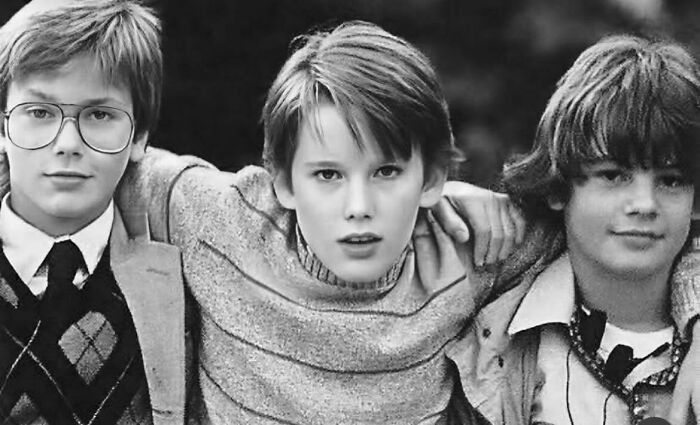
Image source: HistoricLensStories
#19
Robert Redford has long been regarded as a timeless style icon, particularly during the 1960s and 1970s when his effortless blend of ruggedness and elegance set him apart in Hollywood. Born in 1936 in Santa Monica, California, Redford began his career on stage and television before rising to international fame in the late 1960s. His role in Butch Cassidy and the Sundance Kid (1969), opposite Paul Newman, not only made him a household name but also introduced his signature look to the world—casual yet refined, with a hint of Western influence. As autumn tones and layered textures became staples of men’s fashion, Redford embodied the perfect fall aesthetic, combining turtlenecks, corduroy, and tailored jackets with an ease that remains aspirational.
The early 1970s solidified Redford’s status as both an actor and a style leader. In The Candidate (1972) and The Way We Were (1973), he paired his natural charisma with understated clothing that emphasized clean lines, neutral palettes, and sharp tailoring. His wardrobe choices, both on-screen and off, aligned with the season’s earth tones and timeless fabrics—wool coats, suede boots, and layered knits—that reflected a shift in American fashion toward effortless sophistication. In The Great Gatsby (1974), his portrayal of Jay Gatsby showcased a more formal side, with three-piece suits and crisp fall tailoring, reinforcing his image as a man of both style and substance.
Beyond fashion, Redford’s appeal in this era lay in how he represented a broader cultural movement. His roles often touched on themes of authenticity, integrity, and the search for meaning—qualities mirrored in his personal style. He became an emblem of understated cool, favoring pieces that felt natural rather than flashy. By the late 1970s and into the early 1980s, Redford’s look had become synonymous with classic American fall fashion, influencing both men’s and women’s wardrobes. Today, his vintage style continues to inspire seasonal collections, proving that Robert Redford’s autumn aesthetic is as timeless as the films that made him a legend.
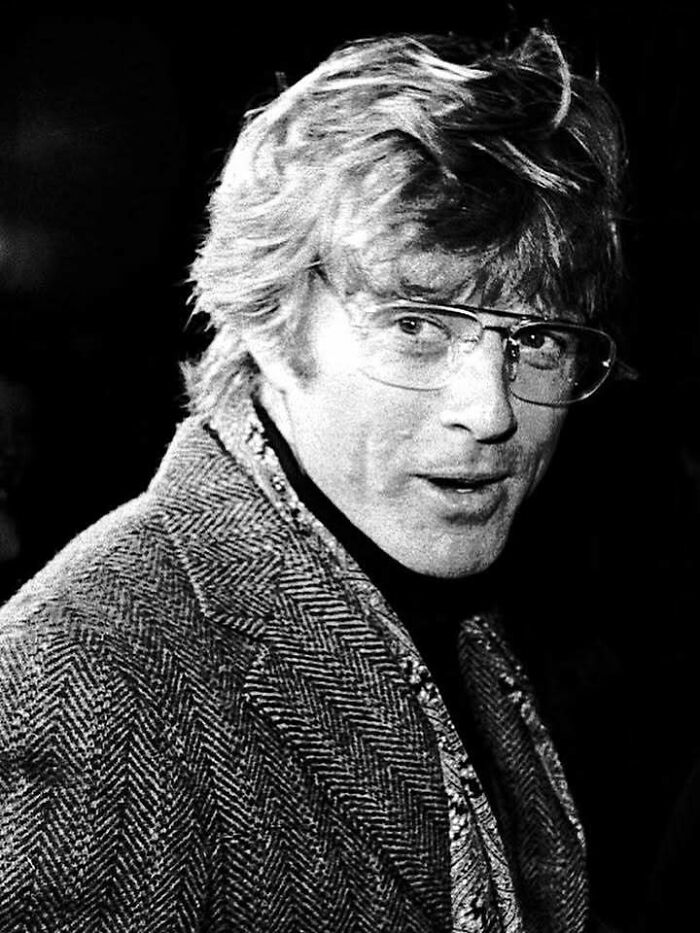
Image source: HistoricLensStories
#20
Grace Kelly at the Cannes Film Festival in May 1955 represents a defining moment in the career of one of Hollywood’s most elegant and enduring icons. Circa 1955, Kelly was at the height of her cinematic acclaim, having already starred in hits like High Noon (1952) and working with legendary directors including Alfred Hitchcock. Her presence at Cannes not only highlighted her international appeal but also underscored the festival’s growing importance as a global showcase for cinema, fashion, and glamour. Photographs from the event capture Kelly in poised, sophisticated ensembles that reflected both her personal style and the elegance of mid-1950s haute couture, cementing her status as a fashion and cultural icon. This appearance helped solidify her reputation as a star capable of bridging the worlds of Hollywood and European cinema.
By 1955, Kelly’s refined beauty and acting talent were complemented by a public persona defined by grace, charm, and composure, qualities that were perfectly suited to the grandeur of Cannes. The festival itself, founded in 1946, had by the mid-1950s become a premier destination for filmmakers, actors, and journalists from around the world. Kelly’s participation drew international media attention, with images highlighting her effortless elegance against the backdrop of the French Riviera. Her attire, often featuring tailored gowns, gloves, and understated jewelry, reflected contemporary fashion trends and influenced women’s style choices globally. Cannes provided the perfect stage for Kelly to embody the sophistication and glamour that would define her public image for decades.
This 1955 Cannes appearance also foreshadowed the next chapter in Kelly’s life, as her increasing prominence in European society would eventually lead to her marriage to Prince Rainier III of Monaco in 1956. Photographs and media coverage from the festival reveal not only her cinematic allure but also the cultivated poise and dignity that would define her later years as Princess of Monaco. Kelly’s time at Cannes symbolizes the intersection of film, fashion, and international celebrity culture, capturing a moment when Hollywood elegance met European sophistication. Each image from May 1955 serves as a historical testament to her influence, highlighting the enduring legacy of a woman whose beauty, talent, and grace transcended both cinema and time.
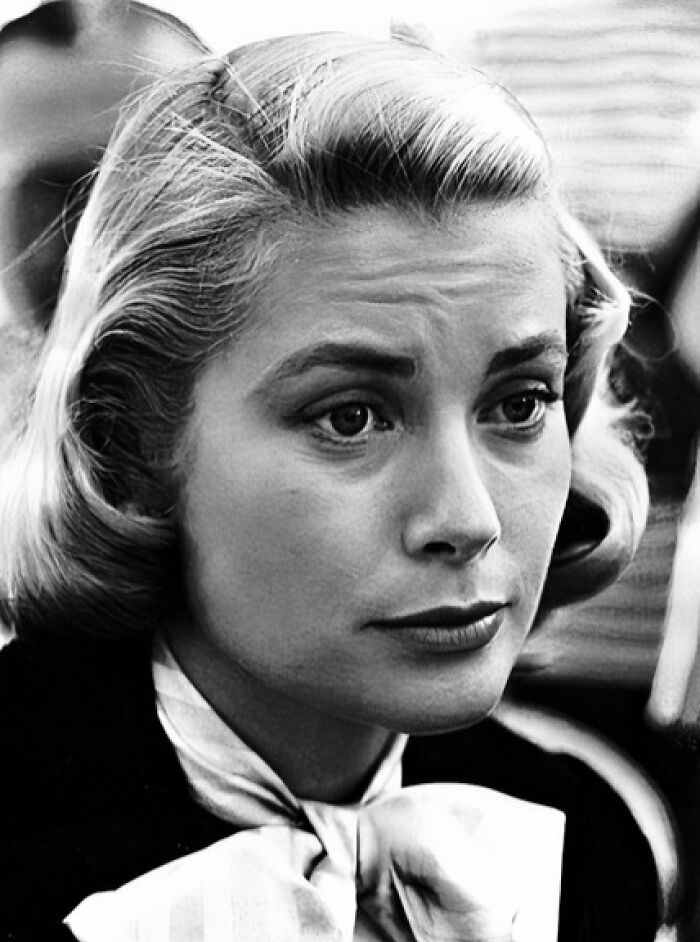
Image source: HistoricLensStories
#21
Captured between 1938 and 1943, this photograph of children in neatly tailored coats and polished shoes offers a glimpse into a world on the brink of immense change. The late 1930s were a period marked by optimism shadowed by uncertainty, as families across Europe and America sought to maintain normalcy amid the growing tensions that would soon erupt into World War II. Children’s fashion of the era reflected both practicality and pride—sturdy wool fabrics, hand-knitted accessories, and careful grooming symbolized resilience and care even in times of economic strain. Sunday outings and school portraits like this one were cherished family rituals, preserving innocence before the disruptions of wartime life.
The double-breasted coats and flat caps worn by the boys mirrored the styles of their fathers, representing a miniature version of adult fashion that was common before mass youth culture emerged. Girls’ bows and curls, often styled by mothers using heated irons or rags, reflected a domestic pride rooted in homemaking traditions. The image captures a social ideal of the time—children presented as disciplined, proper, and full of promise. Despite the looming war, many of these children would have grown up surrounded by community strength, ration books, and an enduring belief in rebuilding after hardship. Their poised expressions reflect a generation raised during transition, between the hardships of the Great Depression and the challenges of global conflict.
This era in fashion and photography also signaled the rise of visual storytelling as an art form. Family photographers and early street documentarians sought to preserve the fleeting purity of youth before the world’s innocence was tested. Today, images like this are invaluable cultural records—showcasing not only clothing and style, but the human spirit’s quiet grace before modern life transformed everything. Each smiling face, each polished shoe, tells the story of a generation that would grow up to shape the postwar world with resilience, creativity, and hope.
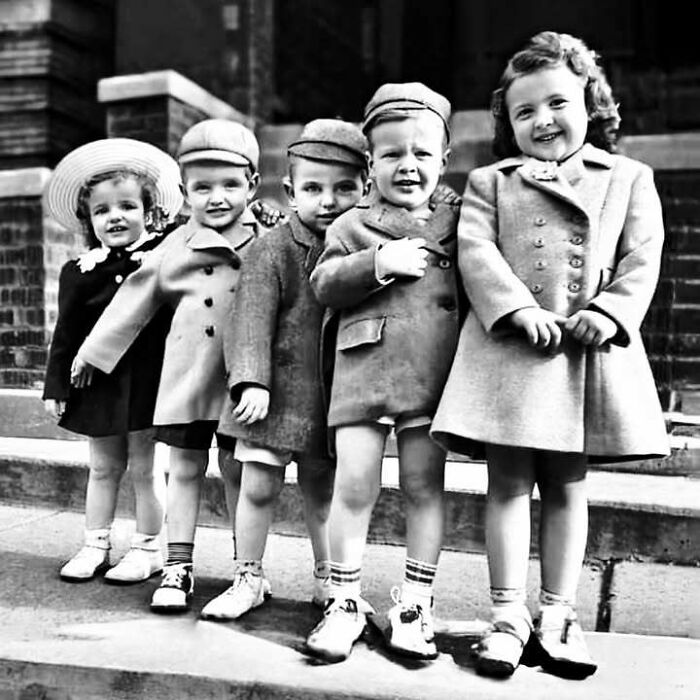
Image source: HistoricLensStories
#22
On 5th September 1970, at the Autodromo Nazionale Monza in Italy, Nina Rindt (née Lincoln) was photographed anxiously waiting for her husband, Jochen Rindt, to complete a practice session for the Italian Grand Prix. Rindt, already a standout in the 1970 Formula One season, was leading the World Drivers’ Championship standings and widely regarded as one of the most talented and daring drivers of his era. Moments after this iconic photograph, tragedy struck: Rindt crashed while approaching the Parabolica corner, sustaining fatal injuries and being pronounced dead en route to a Milan hospital. The image of Nina Rindt, calm yet tense, captures the human side of motorsport — the love, anticipation, and risk intertwined with a sport defined by speed and danger.
Jochen Rindt’s posthumous championship remains one of Formula One’s most remarkable and poignant stories. Despite his untimely passing, no other driver was able to surpass his points total for the 1970 season, securing him the World Drivers’ Championship — the only driver in F1 history to be awarded the title posthumously. Rindt’s driving style, marked by precision, courage, and technical skill, had already earned him multiple Grand Prix victories earlier that season, including wins in Monaco and the Netherlands. The tragic circumstances of Monza added a layer of legend to his career, underscoring the inherent risks of racing during an era when safety standards were far less developed than today.
In November 1970, the Champion Challenge Trophy was officially presented to Nina Rindt, symbolizing both her husband’s achievement and the human cost of the sport. The legacy of Jochen Rindt endures as a reminder of the bravery and talent that define Formula One history. Photographs like Rainer Schlegelmilch’s, now preserved in archives and shared by motorsport historians, offer a window into a defining moment of racing heritage — combining the triumph, tragedy, and timeless allure of the sport. These images capture not just a driver or a race, but the enduring human stories behind Formula One.
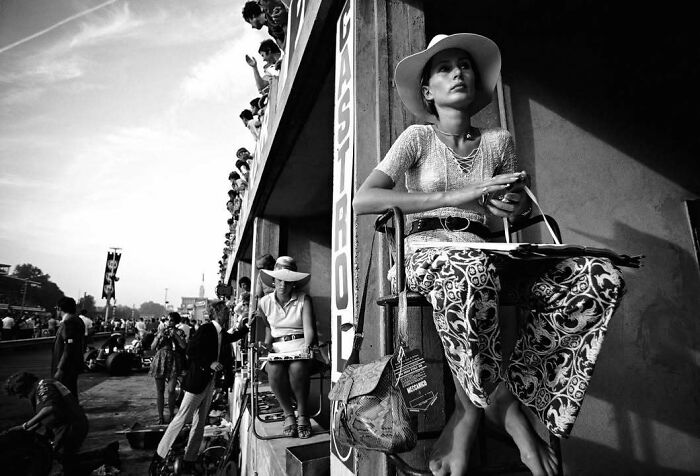
Image source: HistoricLensStories
#23
Alain Delon, photographed here in the timeless elegance of the French Riviera, epitomizes the golden era of European cinema during the 1960s and 1970s. By the early 1960s, Delon had already begun carving out his reputation as one of France’s most captivating actors, known for his piercing blue eyes, magnetic presence, and undeniable charisma. Films like Plein Soleil (1960), Rocco and His Brothers (1960), and L’Eclisse (1962) showcased his versatility, allowing him to move seamlessly between intense dramas and stylish thrillers. His image, often associated with sophistication and old-world charm, became a symbol of French elegance, attracting photographers and fashion enthusiasts alike to capture his refined yet effortless style along the sun-drenched streets of the Côte d’Azur.
The 1960s and 1970s were not only formative for Delon’s cinematic career but also for the cultivation of his personal style, which blended classic tailoring with a modern sensibility. On the Riviera or in Parisian settings, Delon’s aesthetic—suit jackets perfectly cut, casual yet poised, paired with his striking features—projected an image of the cosmopolitan gentleman. This look resonated beyond film, influencing fashion trends across Europe and the United States, and cemented Delon as a global icon of masculinity, elegance, and understated sophistication. Public appearances, photographs, and magazine spreads from this period contributed to his reputation as a symbol of “old money” style and refined taste, reinforcing his status as a cultural and cinematic touchstone.
Beyond his physical presence and style, Alain Delon’s enduring appeal lies in his contribution to the art of performance and the mystique surrounding European cinema during its mid-20th-century peak. His collaborations with directors like Luchino Visconti, Jean-Pierre Melville, and Michelangelo Antonioni created some of the era’s most iconic films, blending narrative depth with visual elegance. Images capturing Delon in casual Riviera settings or Parisian streets not only reflect his timeless aesthetic but also serve as historical markers of a period when cinema, fashion, and culture intertwined seamlessly. Today, these photographs remain emblematic of his legacy, preserving the charisma, class, and iconic presence that have made Alain Delon a permanent figure in cinematic history and fashion lore.
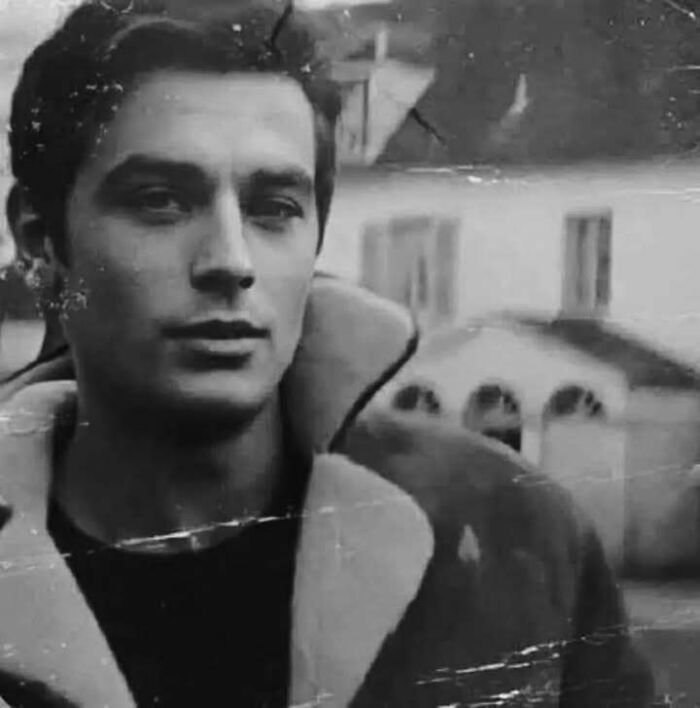
Image source: HistoricLensStories
#24
Joni Mitchell — a voice that became the sound of generations. Emerging in the late 1960s, she transformed from a folk singer performing in coffeehouses to one of the most influential songwriters in modern music history. Born Roberta Joan Anderson in 1943 in Alberta, Canada, she began painting and writing songs inspired by poetry, nature, and emotion. Her 1968 debut album Song to a Seagull marked the beginning of a career defined by authenticity and innovation. By 1971, Blue had cemented her as a lyrical genius — a confessional masterpiece exploring love, freedom, and vulnerability, now considered one of the greatest albums of all time.
Through the 1970s, Joni Mitchell evolved beyond folk into jazz, rock, and experimental sounds, collaborating with legends like Charles Mingus and Jaco Pastorius. Albums such as Court and Spark (1974) and Hejira (1976) expanded her musical universe, blending introspective storytelling with complex harmonies. Her lyrics painted vivid portraits of human experience — longing, independence, and the cost of creativity. She became not just a musician but a cultural symbol of female artistry and self-expression during a time when women were breaking boundaries in both art and life. Her visual art, often featured on her album covers, further revealed her multifaceted creative soul.
By the 1980s and 1990s, Joni continued to defy convention, experimenting with electronic textures in Dog Eat Dog (1985) and reclaiming her acoustic roots in Turbulent Indigo (1994), which earned her a Grammy Award. Across decades — from the 1960s’ folk revolution to the modern streaming era — her influence remains timeless. Artists like Prince, Taylor Swift, and Lana Del Rey have all cited her as inspiration. Joni Mitchell is more than music; she is poetry set to sound — the living spirit of artistic freedom, resilience, and truth that continues to echo through every generation.
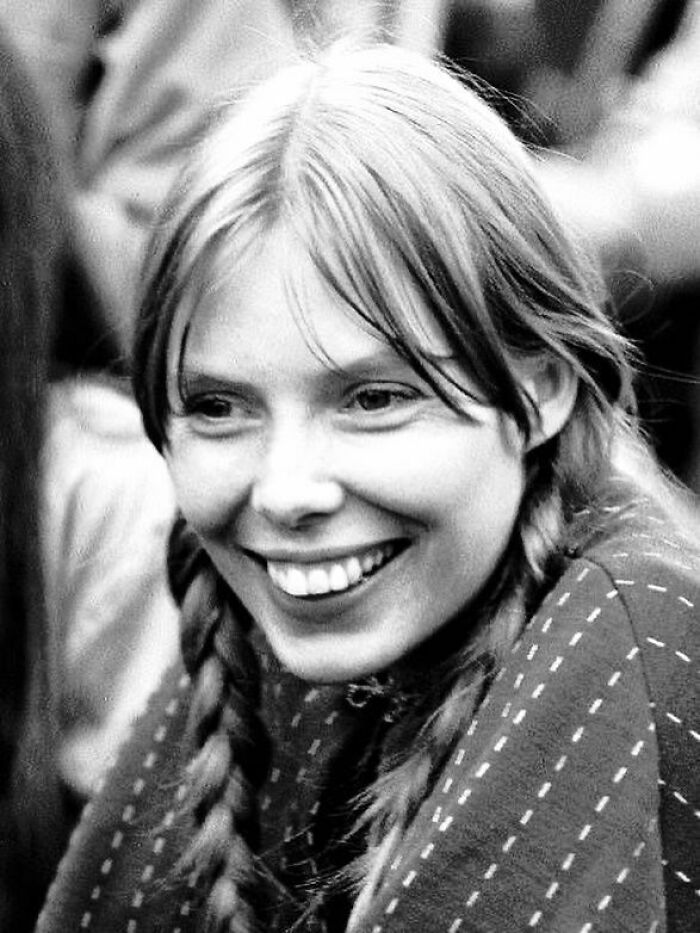
Image source: HistoricLensStories
#25
In 1945, Hollywood photographer Ernest Bachrach captured this striking portrait of Gregory Peck—a moment that coincided with one of the most defining years of the actor’s early career. That same year, Peck starred opposite Ingrid Bergman in Alfred Hitchcock’s psychological thriller Spellbound, a film that blended romance and mystery against the backdrop of postwar cinema’s fascination with the human mind. Released by Selznick International Pictures, Spellbound became a major success both critically and commercially, showcasing Peck’s depth and versatility as an actor. Bachrach’s portrait, with its classic lighting and refined composition, reflected the rising stature of Peck, who had made his film debut just a year earlier in Days of Glory (1944) and was already earning comparisons to Hollywood’s greatest leading men.
Gregory Peck’s collaboration with Hitchcock in Spellbound marked an important intersection between Hollywood glamour and cinematic innovation. The film’s dream sequences—designed by surrealist artist Salvador Dalí—were groundbreaking for their time, blending Freudian psychology with visual artistry. Peck portrayed Dr. Anthony Edwardes, a man haunted by mystery and mistaken identity, while Bergman played the psychoanalyst determined to uncover the truth. Their chemistry on screen brought both critical acclaim and audience fascination, propelling Peck into the ranks of the era’s top box office stars. By the end of 1945, he had also received his first Academy Award nomination for The Keys of the Kingdom, solidifying his reputation as a new icon of integrity and sophistication.
Ernest Bachrach, known for his luminous portraits of Hollywood legends from Katharine Hepburn to Fred Astaire, captured more than just faces—he immortalized the aura of classic cinema. His 1945 portrait of Gregory Peck remains a timeless representation of Hollywood’s postwar ideal: elegance, intellect, and quiet strength. As the 1940s unfolded, Peck’s career flourished with films like Gentleman’s Agreement (1947) and Roman Holiday (1953), while Bachrach’s photography continued to define the visual legacy of the silver screen. Together, their artistry helped shape an era when film and photography merged to create icons that still inspire audiences worldwide.
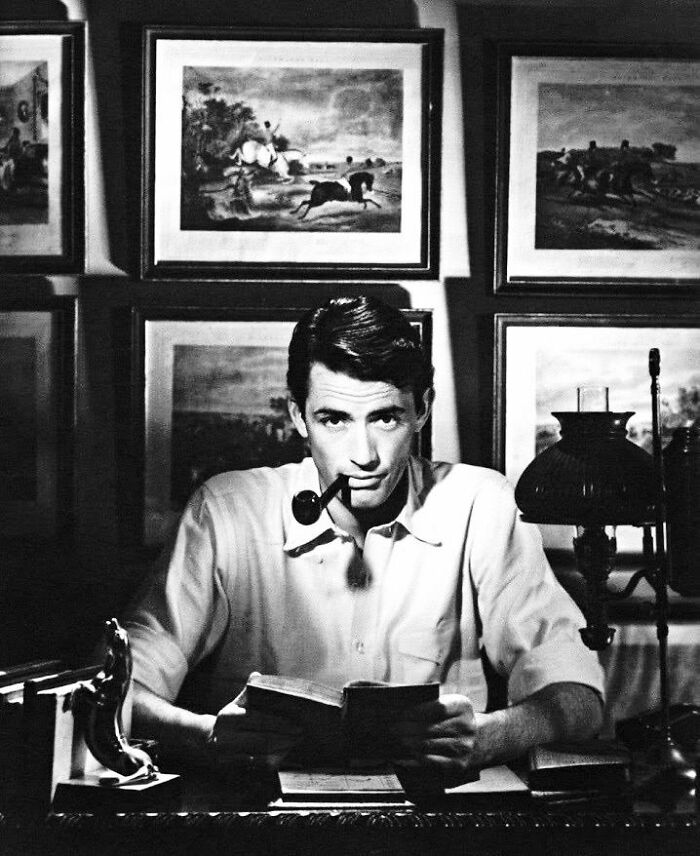
Image source: HistoricLensStories
#26
In 1935, Marlene Dietrich starred in The Devil Is a Woman, directed by Josef von Sternberg, solidifying her status as one of Hollywood’s most enigmatic and glamorous screen goddesses. The film, adapted from the 1927 novel La Femme et le Pantin by Pierre Louÿs, showcased Dietrich in the role of Concha, a seductive and cunning Spanish woman who captivates everyone around her. By this point in her career, Dietrich had already achieved international fame with The Blue Angel (1930) and Morocco (1930), and her collaboration with von Sternberg had created some of cinema’s most visually stunning and stylistically daring films. The photograph captures her signature allure, combining elegance, mystery, and an intoxicating screen presence that defined her as a lasting icon of 1930s Hollywood glamour.
The Devil Is a Woman was notable not only for Dietrich’s magnetic performance but also for von Sternberg’s innovative cinematography and meticulous production design. Shot in Hollywood at Paramount Studios, the film utilized dramatic lighting, expressive shadows, and elaborate costume design to highlight Dietrich’s charisma and the opulence of the story’s Spanish setting. The movie explored themes of desire, manipulation, and social intrigue, illustrating the tensions between passion and power in 1930s European-inspired narratives. Dietrich’s portrayal of Concha pushed boundaries with her sophisticated sensuality, capturing audiences’ attention and cementing her image as a star who could blend elegance with danger in a way few actors could match.
Over the decades, The Devil Is a Woman has remained a classic of Dietrich’s filmography and of early Hollywood cinema, celebrated for its artistry, fashion, and daring characterization. Marlene Dietrich’s collaboration with Josef von Sternberg during the 1930s defined a signature era of cinematic style, one in which costume, lighting, and performance coalesced into enduring visual legends. Photographs from this period, highlighting Dietrich’s poise and magnetic presence, continue to inspire filmmakers, fashion designers, and audiences worldwide. Her performance in The Devil Is a Woman exemplifies the timeless appeal of Hollywood’s golden age, blending sophistication, drama, and irresistible charm in a way that remains iconic nearly a century later.
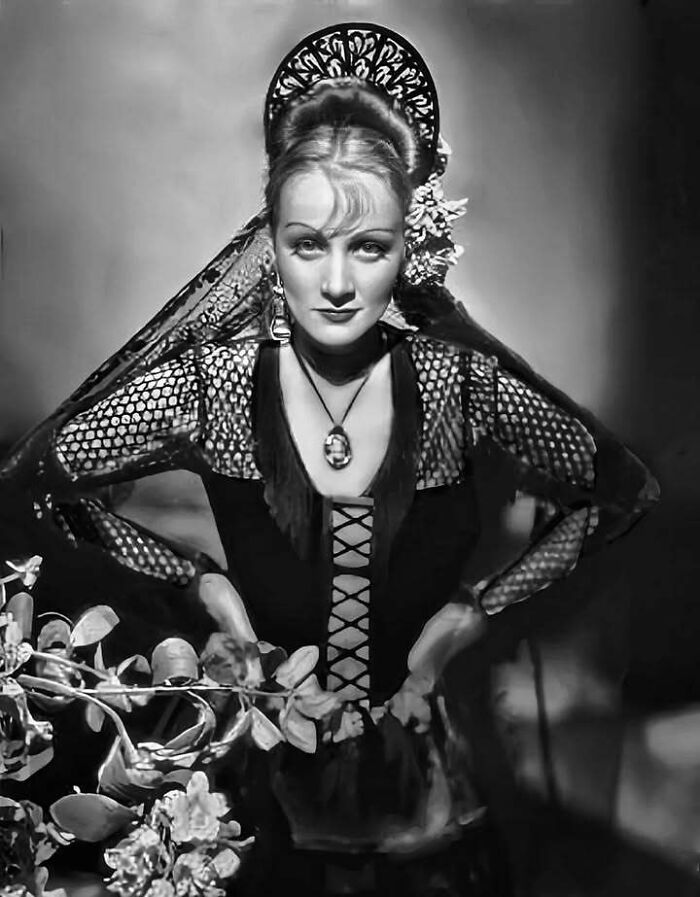
Image source: HistoricLensStories
#27
Cristina Gaioni emerged as one of the bright stars of Italian cinema during the early 1960s, a decade defined by beauty, reinvention, and the international rise of the “Italian screen siren.” Born in Milan in 1940, Gaioni began her acting career at the close of the 1950s, quickly gaining attention for her expressive eyes and nuanced performances that combined youthful innocence with quiet strength. Her early collaborations with directors such as Mauro Bolognini and Mario Monicelli placed her among a new generation of actresses transforming postwar Italian cinema, alongside Claudia Cardinale, Stefania Sandrelli, and Sandra Milo. In 1960, Gaioni won the Nastro d’Argento award for Best Supporting Actress for Nella città l’inferno, where she starred opposite Anna Magnani—cementing her as a serious talent in the industry.
The 1960s marked a golden era for Italy’s film industry, and Gaioni’s career unfolded in perfect harmony with the cinematic revolution taking place in Rome’s Cinecittà studios. She appeared in dramas, comedies, and socially conscious films that mirrored Italy’s rapid modernization and shifting cultural landscape. Directors sought her ability to blend emotional authenticity with understated glamour—a quality that resonated deeply with European audiences. Her on-screen presence reflected the essence of the era’s femininity: poised, intelligent, and modern. Whether in contemporary settings or period pieces, Gaioni captured the spirit of a changing Italy, where women were increasingly at the center of both stories and society.
By the mid to late 1960s, Cristina Gaioni had become a fixture of Italian popular culture, her image gracing magazines and film posters that celebrated the allure of the “Dolce Vita.” Though she never courted international fame as aggressively as some of her contemporaries, her contribution to Italian cinema remains vital—a reminder of the artistry and emotional depth that defined the country’s golden cinematic decade. Her career stands as a testament to an era when film, fashion, and freedom intertwined, creating images that still captivate viewers today.
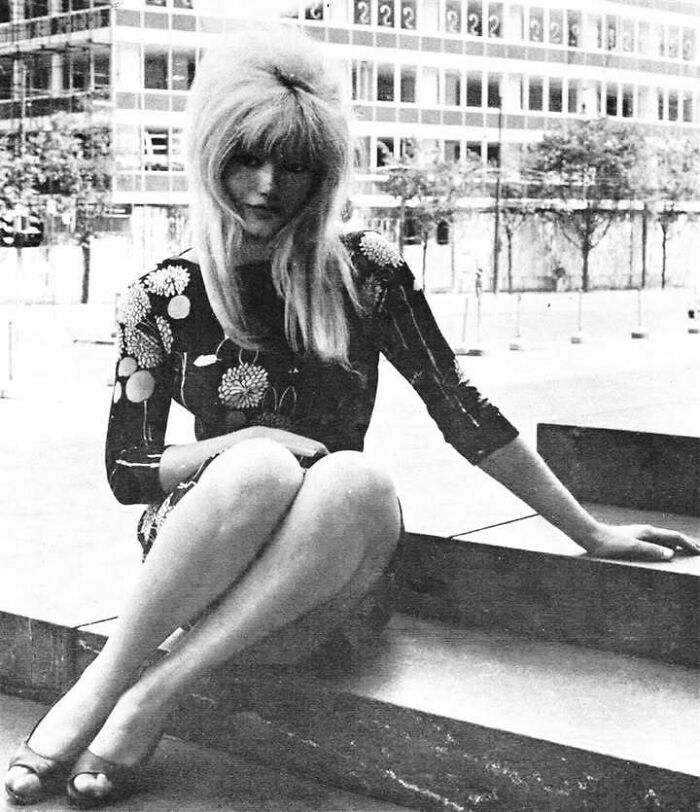
Image source: HistoricLensStories
#28
This elegant image of Marlene Dietrich performing in Montreal in 1967 captures one of the defining chapters of her later career—the era of her celebrated international concert tours. By the mid-1960s, Dietrich had already been a global icon for nearly four decades, known for her magnetic screen presence, androgynous allure, and smoky vocal style. Transitioning from Hollywood to the concert stage, she reinvented herself as a live performer of sophistication and emotional power. Her Montreal performance came during her North American tour, part of a remarkable comeback that saw her captivating audiences from Las Vegas to Paris with a minimalist stage setup: a shimmering gown, a single spotlight, and her unforgettable voice.
At this time, Dietrich was working closely with Burt Bacharach, who served as her arranger and conductor during the early years of her concert tours. Together, they crafted a refined yet emotionally charged repertoire that blended German cabaret songs, American standards, and wartime ballads such as “Lili Marleen.” Her performances were theatrical yet intimate, often laced with nostalgic melancholy and biting humor. In Montreal, as elsewhere, audiences were mesmerized not only by her artistry but also by her mastery of stage persona—a perfect fusion of discipline and mystique. At 66 years old, she embodied the glamour of Old Hollywood while commanding the stage with the confidence of a modern entertainer.
The 1967 tour solidified Dietrich’s status as one of the most enduring figures in 20th-century entertainment. While many of her contemporaries had faded from the spotlight, she continued to evolve, drawing sold-out crowds across Europe and North America. Her Montreal appearance symbolized more than a concert—it was a moment of living history, where the legacy of prewar Berlin met the modern world. Even today, images from this era remind us of her timeless artistry and her extraordinary ability to transform performance into poetry, elegance, and emotional truth.
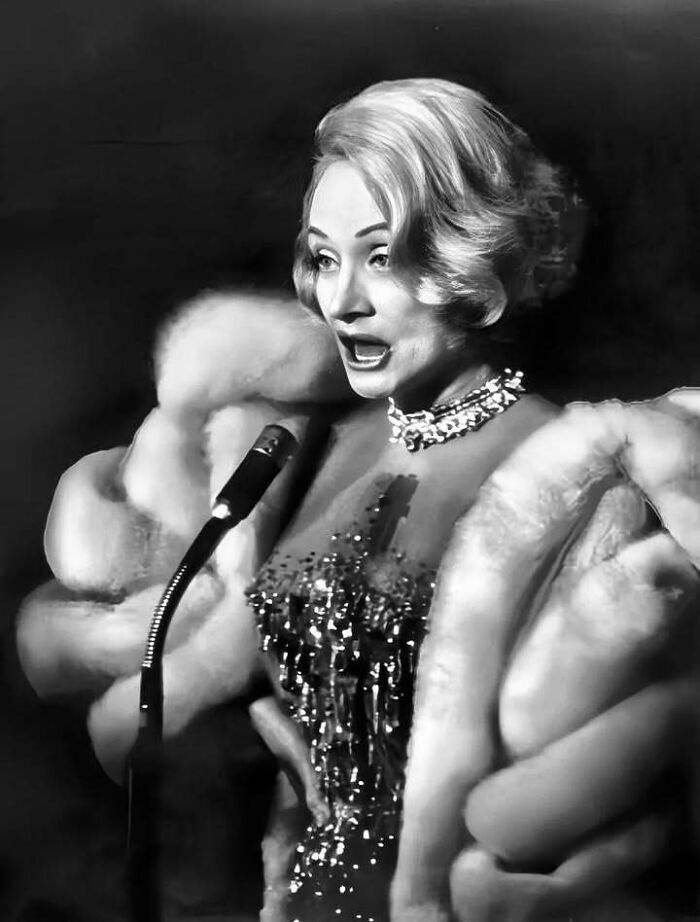
Image source: HistoricLensStories
#29
Romy Schneider and Alain Delon’s love story remains one of the most unforgettable romances in European cinema — a tale of beauty, passion, and artistic chemistry that transcended decades. They first met in 1958 on the set of Christine, a Franco-German production that brought together two rising stars of postwar cinema. Romy, then only 19, was already adored for her role as Empress Elisabeth in the Sissi trilogy, while Alain was a young French actor on the cusp of fame. Their connection was immediate and electric. The film’s release in December 1958 coincided with the beginning of their real-life romance, capturing the imagination of Europe and marking the start of one of cinema’s most iconic partnerships.
During the early 1960s, Romy and Alain became the golden couple of Paris — admired for their elegance, charisma, and shared artistic spirit. They lived between Rome and Paris, mingling with figures like Luchino Visconti and Jean Cocteau, embodying the glamour of a new, liberated generation of artists. Though their engagement ended in 1963, their bond never truly faded. Years later, fate brought them back together on-screen in La Piscine (1969), filmed in the South of France. The film’s tension — both emotional and sensual — reflected the complexity of their real relationship. Every glance between them spoke volumes, blending nostalgia, attraction, and unspoken tenderness, turning the film into a timeless portrait of love remembered and lost.
Even after Romy’s passing in 1982, Alain often spoke of her as the great love of his life. Their story symbolizes more than romance — it represents an era of European cinema defined by sophistication, authenticity, and emotional truth. Romy and Alain remain forever linked — two souls captured in the lens of time, their connection echoing through film history and the hearts of all who still believe in love that never fades. #RomySchneider #AlainDelon #ClassicCinema #1960sLove #EuropeanIcons
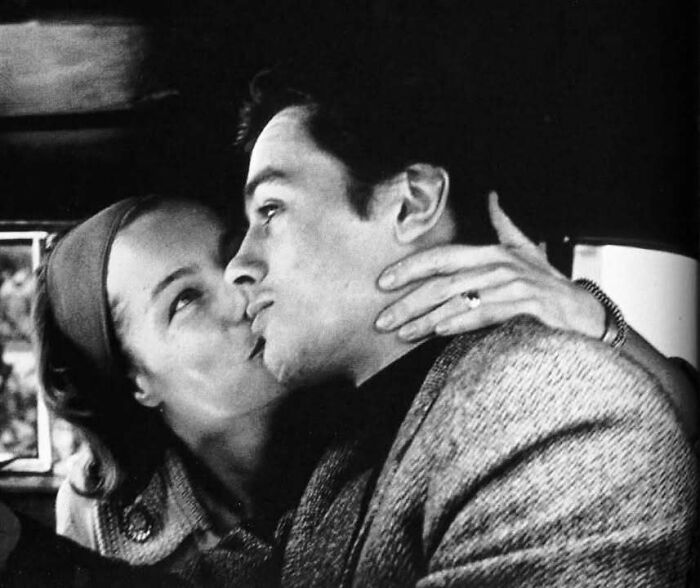
Image source: HistoricLensStories
#30
Hedy Lamarr, born Hedwig Eva Maria Kiesler in Vienna in 1914, remains one of Hollywood’s most legendary figures, celebrated for her striking beauty, captivating screen presence, and remarkable intellect. Rising to international fame in the late 1930s and 1940s, Lamarr starred in films such as Algiers (1938), Boom Town (1940), and Samson and Delilah (1949), where her elegance, allure, and magnetic charisma made her an enduring symbol of glamour and sophistication. Often described as one of the most beautiful women in cinema history, Lamarr captivated audiences with her luminous features, expressive eyes, and ability to bring depth to roles that could have been superficial in lesser hands. Her image, as captured in studio portraits and film stills, continues to define the classic Hollywood aesthetic.
Beyond her screen presence, Hedy Lamarr was also a pioneering inventor whose ingenuity reshaped technology and communications. During World War II, she co-developed a frequency-hopping system intended to guide torpedoes securely, a concept that later became foundational for modern wireless technologies, including Wi-Fi and Bluetooth. This dual legacy — as both a Hollywood goddess and a scientific innovator — illustrates Lamarr’s unique combination of glamour and brilliance, challenging the stereotype that beauty and intelligence are mutually exclusive. By the 1940s and 1950s, she was celebrated not only for her cinematic achievements but also for her remarkable intellect and contribution to technological advancement.
Today, Lamarr’s influence spans both entertainment and science, cementing her place as a cultural and historical icon. Photographs of her, like the one highlighted, capture her timeless allure and poise, serving as reminders of Hollywood’s golden age while honoring her role as a trailblazing thinker. Collectors, historians, and fans continue to celebrate Lamarr’s legacy, from her unforgettable performances on screen to her groundbreaking inventions. Her life story embodies the fusion of artistry, glamour, and intellect, ensuring that Hedy Lamarr remains a symbol of beauty, creativity, and enduring inspiration across generations.
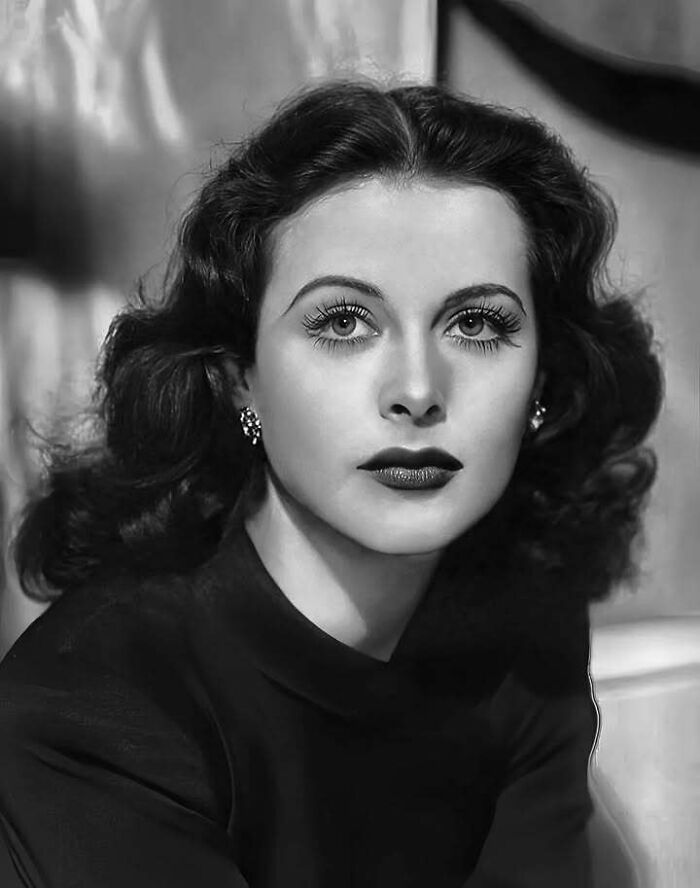
Image source: HistoricLensStories
#31
Elizabeth Taylor’s beauty has often been described as timeless — a perfect balance of elegance, mystery, and magnetism that defined an entire generation of cinema. Born in 1932 in London and raised in Los Angeles, she became one of the most iconic faces of Hollywood’s Golden Age. Her violet eyes, framed by double lashes, became her signature — almost mythical in allure. By the 1950s, Taylor had transformed from child actress to leading lady, starring in classics like A Place in the Sun (1951) and Cat on a Hot Tin Roof (1958). Every close-up captured a kind of cinematic perfection; her beauty was more than physical — it was expressive, luminous, and deeply human, reflecting the emotional depth that made her one of the most captivating actresses of her time.
The early 1960s marked Taylor’s reign as Hollywood royalty. Her portrayal of Cleopatra in Joseph L. Mankiewicz’s Cleopatra (1963) remains legendary — not just for its scale, but for how it solidified her status as both a global beauty icon and a commanding performer. The film’s lavish production, filmed in Rome and London between 1961 and 1963, cost a record $44 million and showcased Taylor in over 65 costumes, each more extravagant than the last. Her role as the Egyptian queen became synonymous with her public persona — powerful, glamorous, and unforgettable. It was during this period that her love story with Richard Burton ignited, adding another layer to her mythic aura.
Elizabeth Taylor’s face wasn’t just admired — it became a cultural symbol of mid-century glamour and resilience. Behind the beauty was an actress of remarkable talent, who won two Academy Awards for Butterfield 8 (1960) and Who’s Afraid of Virginia Woolf? (1966). Even decades later, her presence endures — from Hollywood retrospectives to fashion archives — as the embodiment of classic elegance, emotional depth, and the enduring mystique of true stardom.
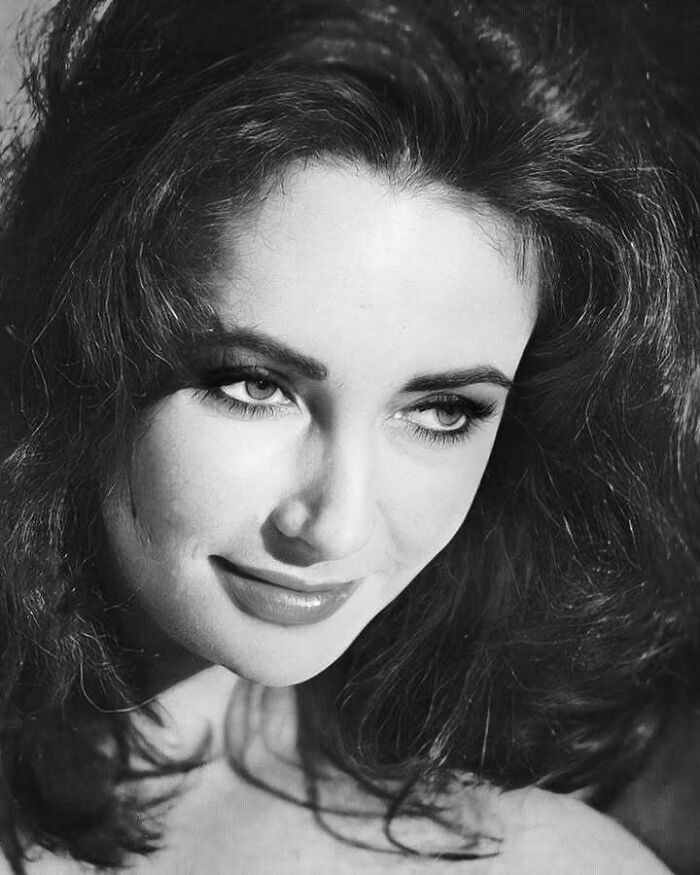
Image source: HistoricLensStories
#32
In 1962, Ingrid Bergman, one of Hollywood’s most celebrated actresses, was photographed in Rome with her daughter Isabella Rossellini, capturing a tender moment between mother and child. By this time, Bergman had already achieved international stardom with landmark performances in films such as Casablanca (1942), Notorious (1946), and Gaslight (1944), for which she won her first Academy Award. Her move to Europe in the late 1950s marked a new chapter in her career, as she embraced Italian cinema and collaborated with renowned directors including Roberto Rossellini, Isabella’s father. The photograph reflects Bergman’s elegant, natural style and the blend of Hollywood glamour with European sophistication that defined her later years.
Isabella Rossellini, born in 1952, grew up surrounded by cinematic brilliance, her childhood bridging the worlds of American and Italian film. In 1962, she was ten years old, and her presence alongside her mother in Rome highlights both the personal and professional intersections of the Bergman-Rossellini family. This period was pivotal in European cinema, with Italian neorealism influencing global storytelling, and Bergman’s collaborations with Rossellini contributing to this transformative movement. The image serves as a visual record of a time when Hollywood glamour met European artistry, with mother and daughter embodying the elegance, grace, and cinematic heritage that would define them both.
Bergman’s life and career continued to flourish throughout the 1960s and beyond, earning additional Academy Awards and international acclaim while shaping Isabella’s path in the arts. Isabella would eventually become a celebrated actress and model in her own right, blending her mother’s poise with a modern sensibility that captivated audiences worldwide. Photographs like this one, taken in Rome in 1962, preserve not only the iconic status of Ingrid Bergman but also the intimate family connections that enriched the history of classic cinema. The image remains a timeless symbol of Hollywood’s golden age and the enduring legacy of one of its most legendary stars.
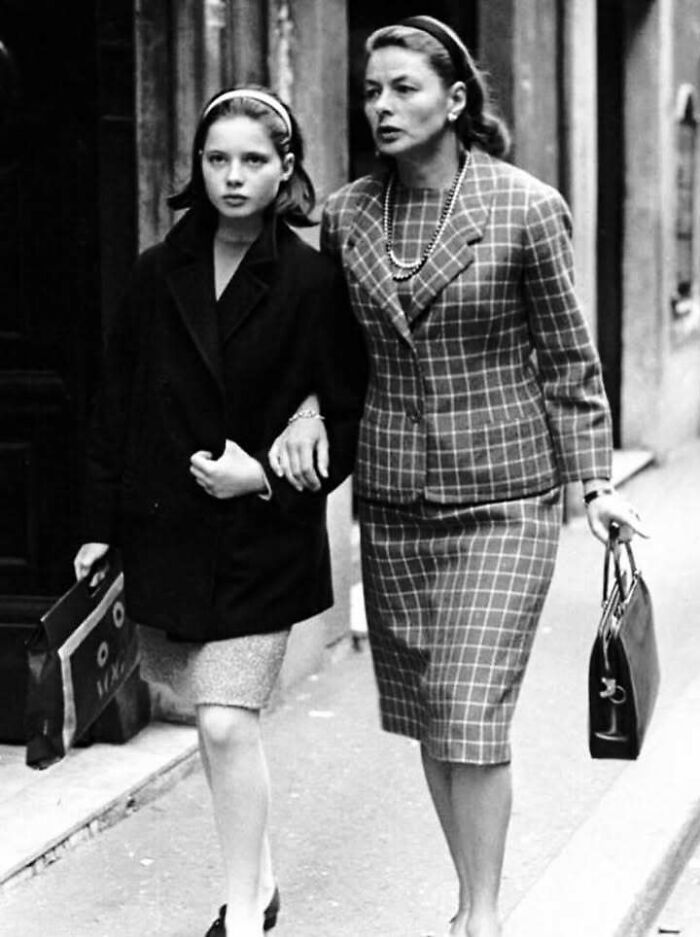
Image source: HistoricLensStories
#33
Released in August 1935, Top Hat remains one of the most celebrated musicals of Hollywood’s Golden Age, uniting the legendary duo Fred Astaire and Ginger Rogers at the height of their creative powers. Directed by Mark Sandrich and produced by RKO Radio Pictures, the film epitomized 1930s elegance, style, and cinematic escapism during the Great Depression. Set against luxurious Art Deco backdrops and featuring glamorous costumes by Bernard Newman, Top Hat offered audiences a world of sophistication and romance. Its dazzling dance sequences, particularly the unforgettable “Cheek to Cheek,” composed by Irving Berlin, became timeless symbols of grace and harmony on screen, embodying the magic of early American musicals.
Filmed between April and June 1935, Top Hat marked the fourth collaboration between Astaire and Rogers, following hits like The Gay Divorcee (1934). Their on-screen chemistry was effortless—Astaire’s precision and Rogers’ fluidity created a perfect blend of rhythm and charm that redefined dance in cinema. The movie’s soundtrack, entirely composed by Irving Berlin, became an instant success, with songs such as “Isn’t This a Lovely Day?” and “Top Hat, White Tie and Tails” becoming standards of the American songbook. Upon its release, the film grossed over $3 million worldwide, a remarkable figure for its time, and became RKO’s most profitable production of the 1930s.
The success of Top Hat in 1935 established Fred Astaire and Ginger Rogers as Hollywood’s most beloved dance partnership. Their influence extended far beyond the screen, inspiring fashion trends, choreography styles, and even stage revivals across decades. The film’s lasting legacy lies in its ability to blend music, movement, and storytelling into pure cinematic artistry. Today, nearly a century later, Top Hat continues to captivate audiences, preserving the timeless glamour and optimism that defined the Golden Age of Hollywood and cementing Astaire and Rogers as icons of dance and classic film history.
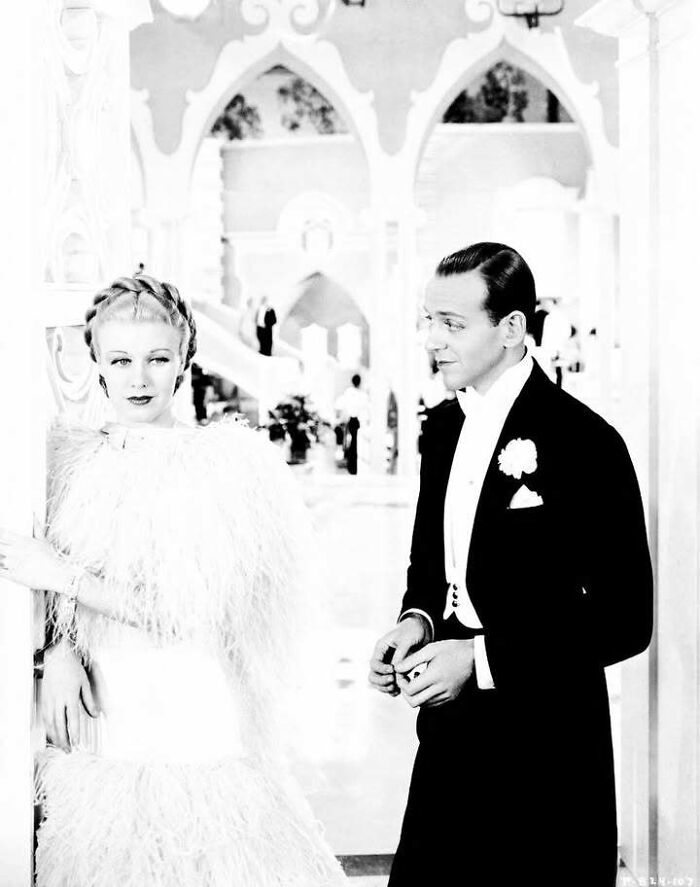
Image source: HistoricLensStories
#34
At the 1953 New York City premiere of Salome, Rita Hayworth embodied Hollywood glamour at its most radiant. By this time, she was already one of the most celebrated actresses in the world—a symbol of postwar beauty and sophistication. Salome, produced by Columbia Pictures, was a Technicolor biblical epic that reimagined the legendary tale of the dance that led to the downfall of John the Baptist. Hayworth not only starred as the titular character but also produced the film through her own company, Beckworth Corporation, demonstrating her growing independence and influence within the male-dominated studio system. Her appearance at the premiere, dazzling in couture and confidence, reaffirmed her status as both a screen siren and a shrewd businesswoman navigating the evolving landscape of 1950s Hollywood.
The early 1950s marked a transformative period in Rita Hayworth’s career. Having conquered the 1940s with films like Gilda (1946) and Cover Girl (1944), she returned to the screen after a brief hiatus to redefine herself for a new decade. Salome showcased not just her sensual magnetism but also her depth as a performer, balancing spectacle with emotion. The film was part of the growing trend of religious and historical epics that captivated Cold War–era audiences, offering escapism and grandeur in a time of cultural tension and change. Hayworth’s commanding screen presence, enhanced by the film’s lavish production design and musical sequences, made Salome one of the defining visual feasts of the era.
Rita Hayworth’s public appearances, such as this premiere, were major cultural events that drew crowds and press from around the world. She was not just an actress but a living emblem of Hollywood’s Golden Age—its allure, its artistry, and its resilience. Salome remains a testament to her dual legacy as both a performer and a producer, a woman who defied expectations while captivating millions. Decades later, this image from the 1953 premiere continues to evoke the timeless magic of classic cinema and the enduring power of Rita Hayworth’s star.
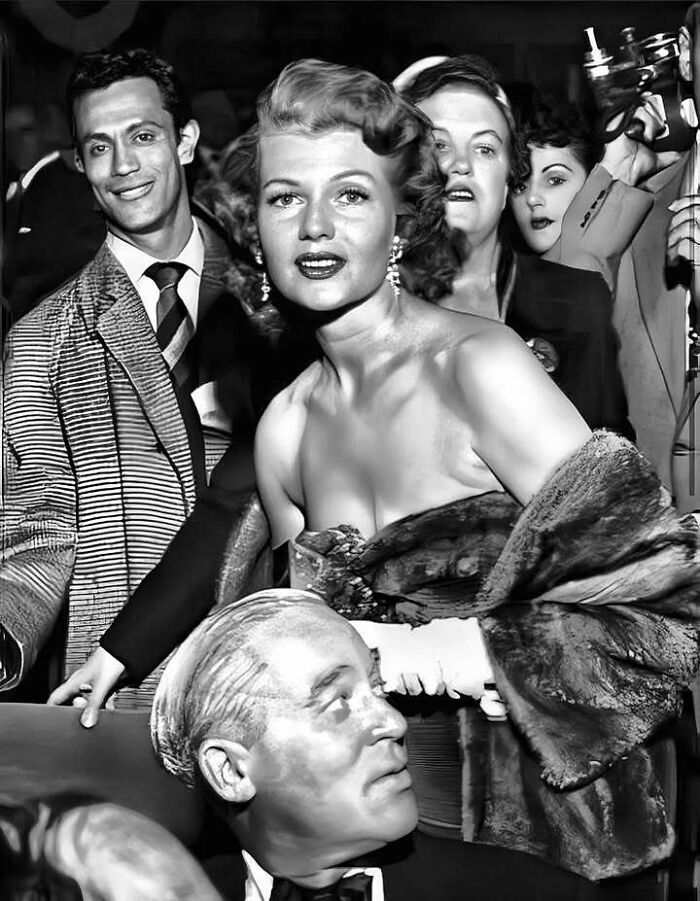
Image source: HistoricLensStories
#35
Jane Birkin remains one of the most captivating cultural figures of the 20th century — an icon of effortless elegance and artistic individuality. Born on December 14, 1946, in London, she rose to prominence in the 1960s, a decade defined by revolution in fashion, film, and music. Birkin’s early acting career began in Britain, but her destiny changed forever when she moved to Paris in 1968 after starring in the film Slogan, where she met Serge Gainsbourg, her creative partner and one of France’s greatest songwriters. Their relationship became legendary — a union of English charm and French sensuality that shaped an era. Together, they recorded the provocative hit Je t’aime… moi non plus (1969), which became an international sensation and a defining sound of late-1960s Europe.
Throughout the 1970s, Jane Birkin became more than just a muse — she evolved into a symbol of liberated femininity. Her natural style — undone hair, minimal makeup, and bohemian chic — redefined beauty standards and inspired designers around the world. She starred in acclaimed French films such as La Piscine (1969), La Pirate (1984), and La Femme d’à côté (1981), proving her depth as an actress. Beyond cinema, she became a fixture in the global fashion landscape, her wicker basket bag and carefree Parisian aesthetic becoming timeless trends. Her authenticity, humility, and refusal to conform made her a muse not only for Gainsbourg but also for future generations of artists and designers.
By the 1980s and 1990s, Birkin’s legacy was cemented both in fashion and humanitarian work. The iconic Hermès Birkin bag, created in 1984 after a chance meeting with Jean-Louis Dumas on a flight, immortalized her name in the luxury world. Yet, Jane always remained grounded, dedicating herself to humanitarian causes and music. Her career spanned over five decades, blending art, activism, and timeless allure. Even today, Jane Birkin’s influence continues — her effortless grace and artistic spirit representing a golden age of culture that never truly faded.

Image source: HistoricLensStories
#36
This photograph of President John F. Kennedy in prayer captures the quiet strength behind one of the most transformative presidencies in American history. Taken in the early 1960s, during a time of immense national tension and hope, it reflects the inner gravity of a leader carrying the moral weight of his country’s conscience. Kennedy’s presidency, from 1961 to 1963, was defined by his eloquence, youth, and vision for progress — but also by his deep awareness of responsibility. Behind his confident public image was a man who, as this image suggests, often sought spiritual grounding amid crises like the Cuban Missile confrontation, the Cold War, and the growing demand for racial justice.
By 1963, Kennedy had evolved into a president unafraid to confront the nation’s moral challenges. His June 11, 1963 address on civil rights marked a turning point — a speech that echoed the ideals of equality and compassion, calling racial injustice “a moral issue as old as the scriptures and as clear as the American Constitution.” That same year, he proposed comprehensive civil rights legislation, paving the way for the Civil Rights Act of 1964, signed later by Lyndon B. Johnson. His words and leadership inspired millions — including Dr. Martin Luther King Jr., with whom he shared a belief in the transformative power of courage and conscience.
This image of Kennedy at prayer feels especially powerful in hindsight. It transcends politics and evokes the humanity of a leader who bore the immense pressure of change with humility. For many, including generations of Americans who benefited from the civil rights movement, this photo represents faith, moral vision, and integrity in leadership. Kennedy’s legacy endures as a reminder that true greatness lies not only in power, but in the courage to seek justice for all.
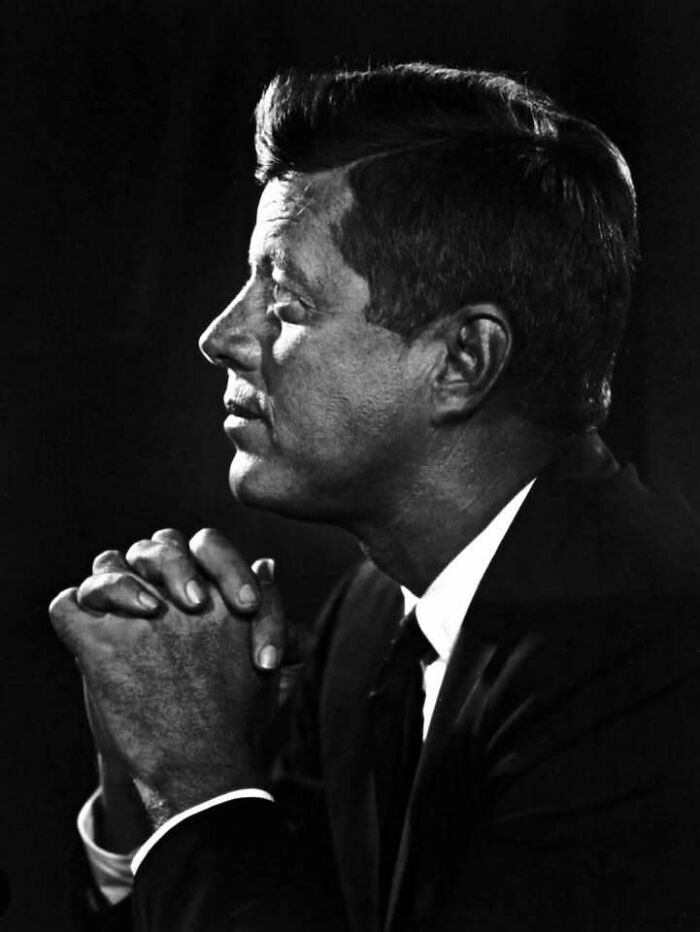
Image source: HistoricLensStories
#37
On December 2, 1989, Meg Ryan attended the London premiere of When Harry Met Sally…, one of the most iconic romantic comedies of the late 20th century. By this time, Ryan was emerging as a beloved figure in Hollywood, known for her natural charm, effervescent screen presence, and comedic timing. The film, directed by Rob Reiner and written by Nora Ephron, paired her with Billy Crystal in a witty exploration of love, friendship, and timing, capturing the hearts of audiences worldwide. Ryan’s arrival at the London premiere symbolized her rising star status and the international anticipation surrounding the film, which would soon become a cultural touchstone for romantic storytelling.
When Harry Met Sally…, released in 1989, is celebrated for redefining the romantic comedy genre with sharp dialogue, relatable characters, and memorable performances. Meg Ryan’s portrayal of Sally Albright combined vulnerability, intelligence, and charm, establishing her as a defining actress of the genre. The film also featured iconic scenes, such as the “I’ll have what she’s having” moment, which became part of popular culture almost immediately. Premiering in London highlighted the global reach of American cinema during the late 1980s, showcasing Hollywood’s ability to resonate with international audiences while cementing Meg Ryan’s role as a leading figure in contemporary film.
Photographs from the premiere capture more than a star arriving at a glamorous event; they reflect the broader cultural impact of When Harry Met Sally… and the era’s fascination with romantic comedies as both entertainment and social commentary. Meg Ryan’s appearance at the premiere embodies her early career momentum and the international acclaim the film would enjoy, influencing generations of filmmakers, actors, and audiences. Today, images from that December evening serve as a historical snapshot of a milestone moment in film history, celebrating Ryan’s enduring charm and the timeless appeal of a movie that continues to define romantic comedy storytelling.
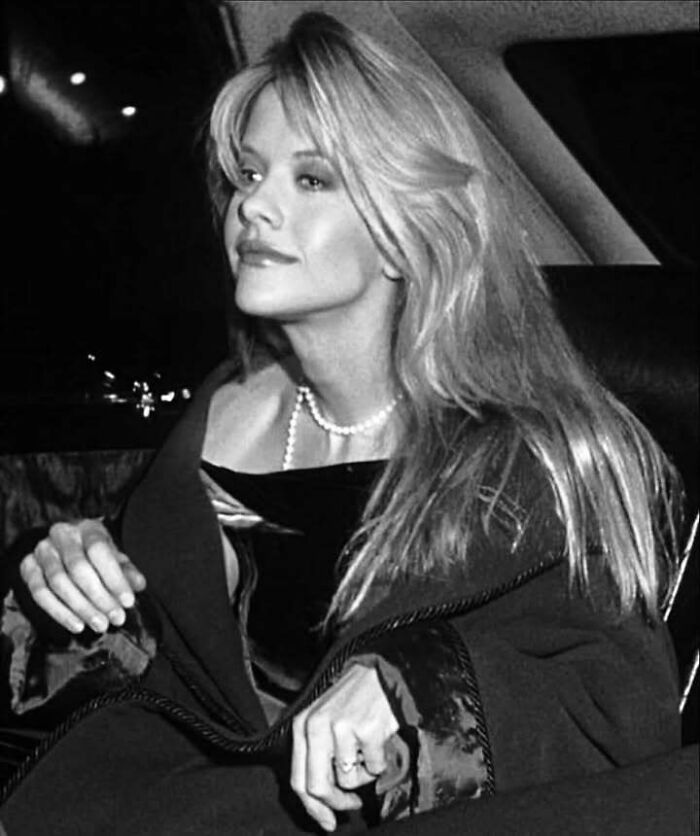
Image source: HistoricLensStories
#38
This iconic photograph brings together some of the most celebrated figures in mid-20th century American entertainment, capturing a unique convergence of talent, charisma, and cultural influence. Frank Sinatra Jr., carrying the legacy of his father, Frank Sinatra, was an accomplished singer and conductor in his own right, gaining recognition in the 1960s and 1970s for his smooth vocal style and stage presence. Sammy Davis Jr., a multifaceted performer known for his singing, dancing, and acting, was a central figure in the Rat Pack and a trailblazer for African American artists in Hollywood. Together, they represent the continuity of entertainment dynasties and the collaborative spirit of this golden era of show business.
Ossie Davis and Cicely Tyson, both pivotal figures in American theater, film, and television, are also featured in the photograph. Davis, an accomplished actor, playwright, and activist, used his voice both on stage and off to address social justice issues and civil rights. Cicely Tyson, renowned for her groundbreaking portrayals of strong, resilient Black women, became a cultural icon whose performances challenged Hollywood norms and inspired generations. Their presence alongside legendary musicians emphasizes the intersection of art, activism, and performance during the mid-20th century, reflecting a period when entertainment was both a form of artistry and a platform for social commentary.
Louis Armstrong, one of the most influential jazz musicians of all time, completes this assembly of legends. By 1960, Armstrong had already shaped the global landscape of jazz, his virtuosic trumpet playing and unmistakable voice transcending racial and cultural barriers. The photograph, likely taken during a high-profile event or gathering celebrating American music and performance, immortalizes a moment when the boundaries between jazz, Broadway, and Hollywood blurred. It serves as a testament to the extraordinary talents of these individuals, their contributions to culture, and the enduring legacy of an era defined by innovation, excellence, and the charisma of performers who became icons for generations.
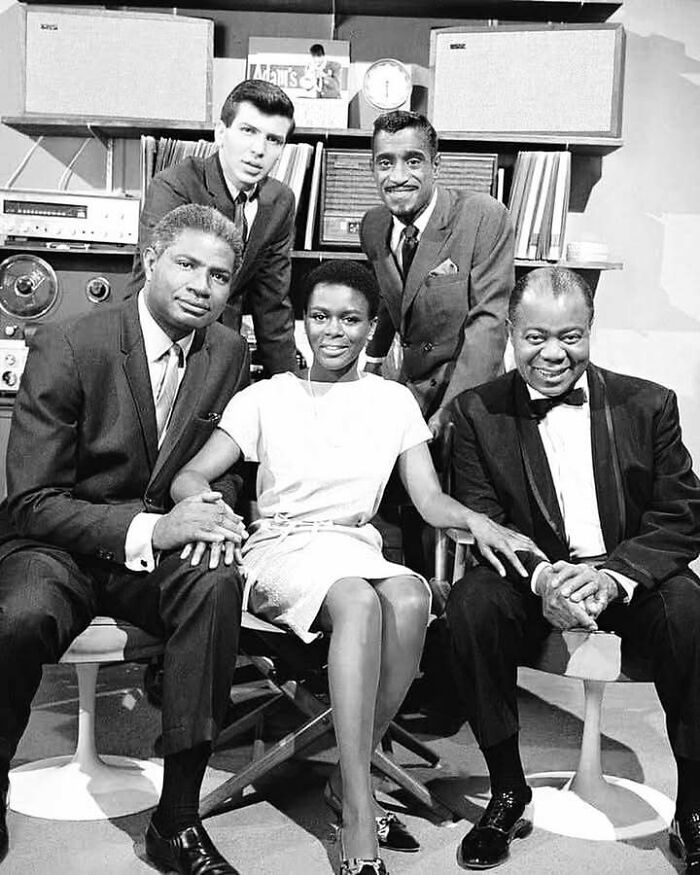
Image source: HistoricLensStories
#39
Phil Collins, one of the most influential musicians of the late 20th century, brought his unmistakable sound to the Umbria Jazz Festival in Perugia, Italy, during the 1980s, a period when his solo career was rapidly gaining international momentum. Known both as the drummer and lead vocalist of Genesis and as a chart-topping solo artist, Collins had already released albums such as Face Value (1981) and No Jacket Required (1985), which solidified his reputation as a powerhouse in pop, rock, and soul-influenced music. His appearance at Umbria Jazz highlighted not only his versatility but also the festival’s growing international prestige, attracting artists from across genres.
The Umbria Jazz Festival, first launched in 1973, had by the mid-1980s become one of Europe’s most respected music events, known for blending traditional jazz with contemporary styles, from blues and gospel to rock and pop. For Collins, performing in Perugia offered an opportunity to engage with audiences in a more intimate, musically eclectic setting compared to the massive stadium tours he was also undertaking at the time. His dynamic presence, marked by his emotive voice and precise drumming, resonated with festival-goers who appreciated his ability to move seamlessly between jazz-inflected performances and mainstream hits that had already topped charts around the world.
This appearance underscored Collins’s unique position in music history. Few artists have achieved simultaneous success as both a band member and a solo act, and fewer still have crossed so many genres with ease. His presence at Umbria Jazz reflected his respect for musical traditions while showcasing his broad appeal, bridging audiences of jazz purists and pop enthusiasts alike. Today, the memory of Phil Collins performing in Perugia remains part of the festival’s celebrated history, a reminder of how this Italian stage welcomed some of the world’s most iconic musicians during their peak creative years.
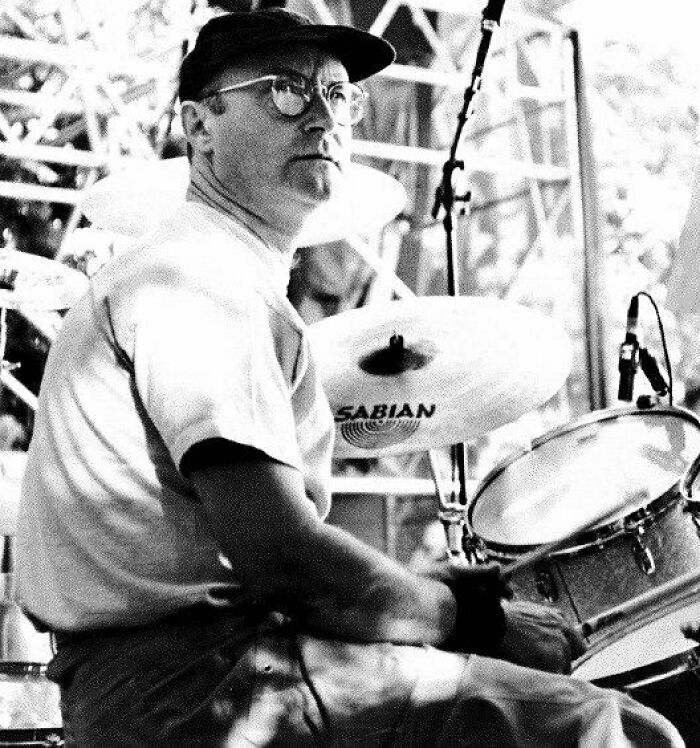
Image source: HistoricLensStories
#40
By 1985, Dianne Wiest had firmly established herself as one of the most versatile and compelling actresses of her generation. Born in 1948 in Kansas City, Missouri, Wiest trained at the University of Maryland and later with the prestigious American Conservatory Theater, building a foundation that would allow her to seamlessly navigate stage, film, and television. By the mid-1980s, she had already appeared in acclaimed projects including Tootsie (1982), where her performance as Sandy was praised for its depth and nuance, earning her a reputation as a character actress capable of balancing subtlety with emotional power. Christopher Durang’s comparison of Wiest to legendary performers like Margaret Sullavan, Julie Harris, and Jessica Tandy underscored her unique ability to blend intelligence, charm, and authenticity in every role.
Wiest’s career in the early 1980s was marked by collaborations with some of the most influential directors of the era. Her work with Woody Allen, beginning with Hannah and Her Sisters (1986), though slightly later, was already being anticipated due to her rising reputation. Allen recognized her ability to inhabit complex, multidimensional characters, often portraying women with inner strength, wit, and vulnerability—a quality reminiscent of the classic actresses Durang referenced. On stage, Wiest continued to earn acclaim for her performances in productions such as The Man Who Came to Dinner and Macbeth, demonstrating that her talents extended far beyond the screen.
By the time of Durang’s 1985 commentary in Film Comment, Wiest had become synonymous with intelligent, transformative performances that resonated with audiences and critics alike. Her distinctive presence, whether in leading roles or supporting parts, set her apart from contemporaries and cemented her as a modern heir to the legendary actresses of Hollywood’s Golden Age. This period not only solidified her professional identity but also laid the groundwork for the multiple Academy Awards and accolades she would earn later, confirming her enduring influence in American cinema and theater.
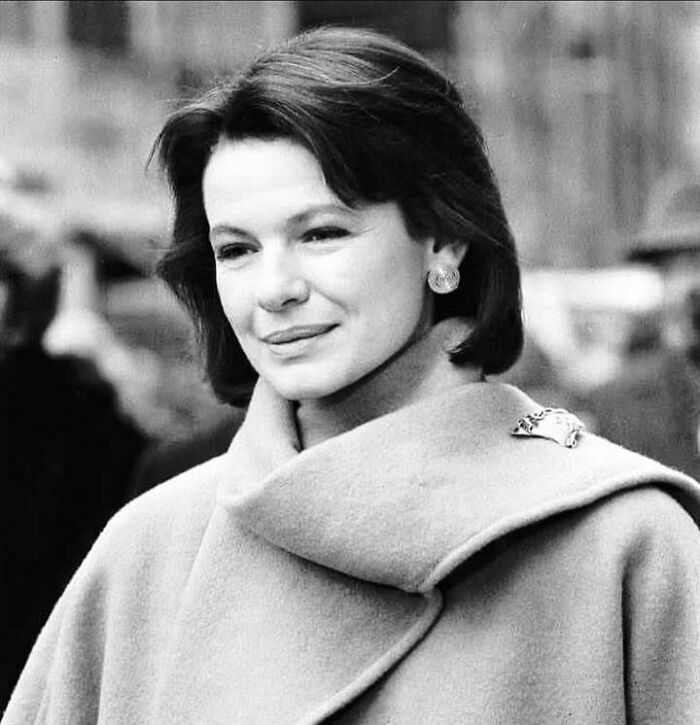
Image source: HistoricLensStories
#41
Brigitte Bardot in the 1950s and 1960s epitomized Old Hollywood glamour while simultaneously redefining French cinema and fashion. Circa 1956, Bardot rose to international fame with the release of And God Created Woman, a film that not only showcased her magnetic beauty and sensual presence but also symbolized a new era of liberated femininity. Photographs from this period capture her effortlessly chic style—tousled hair, smoky eyes, and a playful yet confident demeanor that exuded both allure and individuality. Bardot’s appeal extended far beyond the screen; she became a global fashion icon whose influence shaped trends in Paris and Hollywood alike, from the popularity of Breton stripes and ballet flats to the art of casual, natural glamour. Her image graced magazine covers worldwide, solidifying her status as a muse for photographers, designers, and artists of the era.
During the late 1950s and early 1960s, Bardot’s film career and public persona reflected a bold, modern approach to female stardom. She starred in landmark films such as Contempt (1963) by Jean-Luc Godard and Viva Maria! (1965), collaborating with visionary directors who celebrated her talent while enhancing her cinematic mystique. Her presence in photo shoots and publicity stills demonstrated a mastery of expression, capturing vulnerability, charm, and playfulness all at once. Iconic imagery from this era highlights Bardot’s ability to embody both sophistication and natural sensuality, bridging the gap between traditional glamour and the emerging youth-driven cultural movements of mid-20th-century Europe.
Bardot’s influence extended beyond cinema into fashion, lifestyle, and popular culture, establishing her as one of the most enduring icons of Old Hollywood glamour fused with French elegance. Her signature style—voluminous hair, winged eyeliner, and effortless yet striking clothing choices—set trends that remain influential decades later. By the mid-1960s, she had become synonymous with freedom, charm, and modern femininity, a symbol of beauty and confidence that resonated globally. Photographs capturing Bardot during this transformative period are more than visual records; they are historical artifacts reflecting a unique intersection of film, fashion, and cultural revolution, encapsulating the timeless appeal of a true icon.

Image source: HistoricLensStories
#42
In 1972, Pamela Courson was living quietly in San Francisco, a city still pulsing with the aftershocks of the 1960s counterculture. Known to the world as the longtime companion and muse of Jim Morrison, lead singer of The Doors, Pamela had shared a deep, passionate relationship with him from 1965 until his untimely passing in July 1971. The couple had met in Los Angeles during the height of the psychedelic revolution, and their love story unfolded amidst the chaos of fame, poetry, and rebellion. After Jim’s passing in Paris, Pamela retreated to California, carrying with her the echoes of an era defined by art, music, and freedom. San Francisco — the heart of the hippie movement — offered her both refuge and remembrance.
By 1972, the city’s Haight-Ashbury district had transformed from a vibrant utopia into a more melancholic shadow of its former self. Yet, for Pamela, it was a place where the spirit of the 1960s still lingered — in the vintage boutiques, record stores, and cafés filled with dreamers and drifters. Her bohemian style — flowing fabrics, long red hair, and a touch of ethereal mystery — embodied the fashion and mood of the early ’70s. Friends described her as poetic and introspective, often writing in journals or sketching, still deeply influenced by the artistic energy she had shared with Morrison. Her life in San Francisco symbolized both survival and solitude — a continuation of the idealism that had shaped her generation.
Pamela Courson’s story is intertwined with the mythology of The Doors and the legacy of 1960s rock culture. Though she passed away in 1974 at just 27, her presence in photographs and memories from 1972 captures a fleeting moment in time — when music, love, and youth burned brightly before fading into legend. Today, she remains a symbol of that hauntingly beautiful intersection between art, freedom, and the fragile intensity of the counterculture dream.
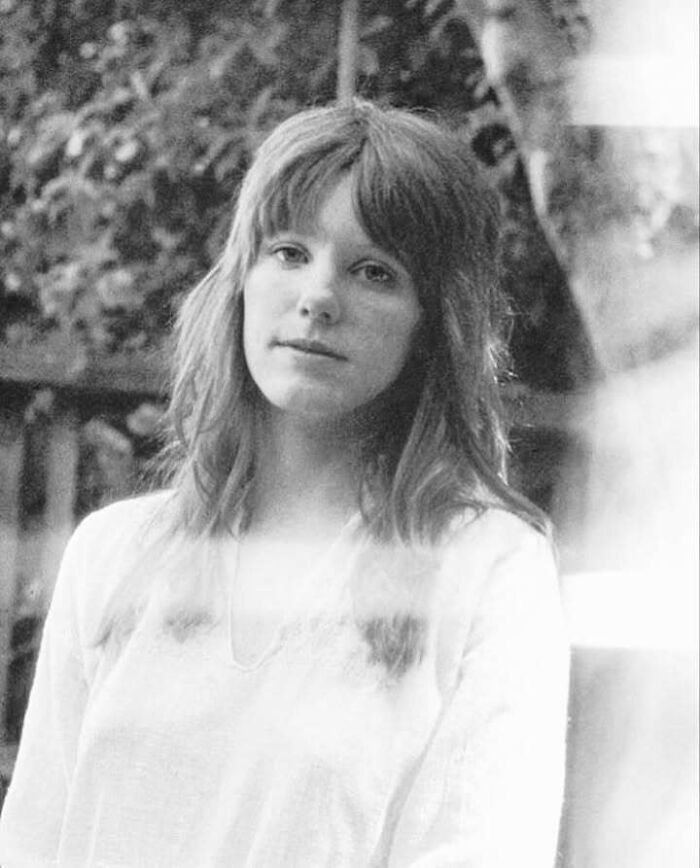
Image source: HistoricLensStories
#43
In 1955, James Dean and Natalie Wood brought to life one of Hollywood’s most iconic portrayals of teenage angst in Rebel Without a Cause, directed by Nicholas Ray. The film captured the restless energy and emotional turbulence of 1950s youth, becoming a defining work of its era. James Dean, already gaining fame through his roles in East of Eden (1955) and later Giant (1956), embodied the brooding, sensitive rebel whose inner conflicts resonated with audiences nationwide. Natalie Wood, a rising star who had already appeared in Miracle on 34th Street (1947) and The Searchers (1956), portrayed Judy, a young woman navigating the challenges of identity, family, and love, offering depth and relatability that balanced Dean’s intense presence. Their on-screen chemistry became legendary, helping cement the film’s status as a cultural touchstone.
Rebel Without a Cause was groundbreaking in both narrative and style, addressing themes of alienation, generational conflict, and the search for meaning at a time when post-war America was experiencing rapid social change. The film’s iconic imagery—Dean in his red jacket, Wood with her expressive gaze—captured the imagination of audiences and photographers alike, creating enduring symbols of teenage rebellion. Filming took place in Los Angeles, with the Griffith Observatory and local streets serving as key backdrops, providing an authentic urban environment that reflected the tension and excitement of adolescent life. The movie’s release in October 1955 drew critical and commercial acclaim, influencing future films and solidifying the “rebel” archetype in American cinema.
The legacy of Rebel Without a Cause extends far beyond its original release, shaping popular culture, fashion, and cinematic storytelling for decades. James Dean’s tragic passing in a car accident in September 1955, just before the film’s premiere, added to its mythic status, immortalizing him as a symbol of youthful intensity and fleeting genius. Natalie Wood’s performance further established her as a versatile actress capable of conveying vulnerability and strength. Today, colorized images of Dean and Wood on set, allow contemporary audiences to connect with the timeless energy, emotion, and style of a film that continues to define the golden age of Hollywood’s exploration of youth, rebellion, and cinematic artistry.
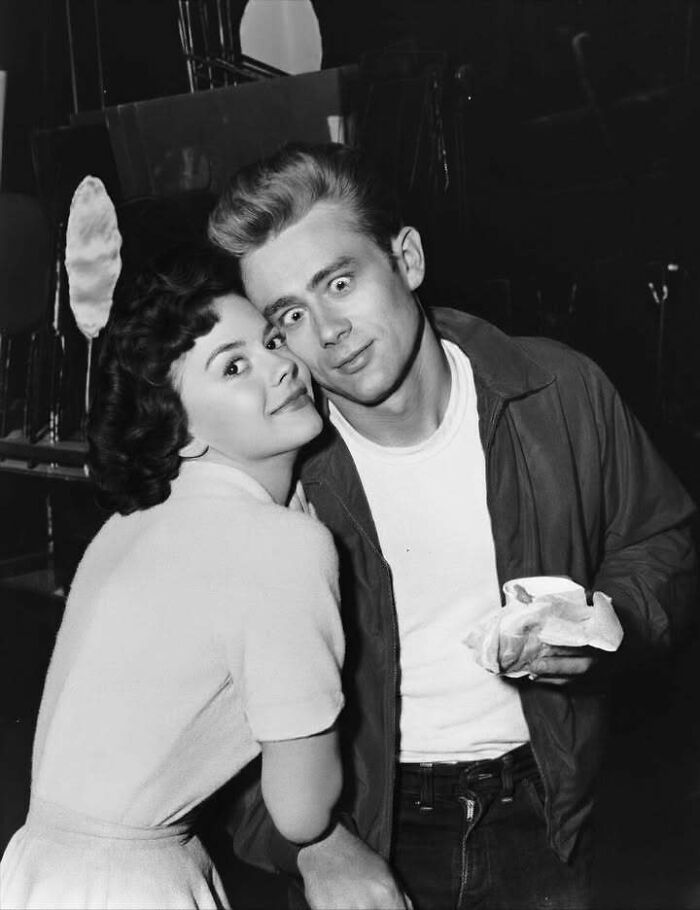
Image source: HistoricLensStories
#44
In 1961, Universal Pictures released The Spiral Road, a sweeping adventure-drama set in the Dutch East Indies, starring Rock Hudson and introducing Gena Rowlands in one of her earliest major roles. Directed by Robert Mulligan, the film told the story of a young doctor, played by Hudson, who journeys deep into the jungles to study tropical diseases under the guidance of a reclusive medical pioneer. Rowlands, cast as Hudson’s devoted wife, brought warmth and emotional depth to the role, foreshadowing the powerhouse performances that would later define her legendary career. For Rowlands, who had recently married actor and director John Cassavetes, this Hollywood production marked a pivotal step in her rise from television appearances to the silver screen.
Rock Hudson, already one of the era’s most bankable stars, was at the height of his career when The Spiral Road premiered. Known for his magnetic screen presence and versatility, he had recently starred in Pillow Talk (1959) with Doris Day, a film that cemented his place as both a romantic lead and a charismatic dramatic actor. By the early 1960s, Hudson was a consistent box-office draw for Universal, balancing glossy romantic comedies with more serious projects like this one. His pairing with Rowlands offered audiences a compelling mix of star power and fresh talent, set against the backdrop of exotic locations and themes of science, faith, and human resilience.
The release of The Spiral Road in 1961 came during a transitional moment in Hollywood. Audiences were increasingly drawn to films shot on location, reflecting a growing appetite for realism and adventure. While the film received mixed critical reviews, it stood out for its lush cinematography and the chemistry between its leads. More importantly, it introduced wider audiences to Gena Rowlands, who within a decade would redefine American independent cinema with Cassavetes through films like A Woman Under the Influence (1974). Seen today, this collaboration between Rowlands and Hudson offers a fascinating glimpse into the crossroads of studio-era glamour and the more daring, character-driven cinema that was soon to follow.
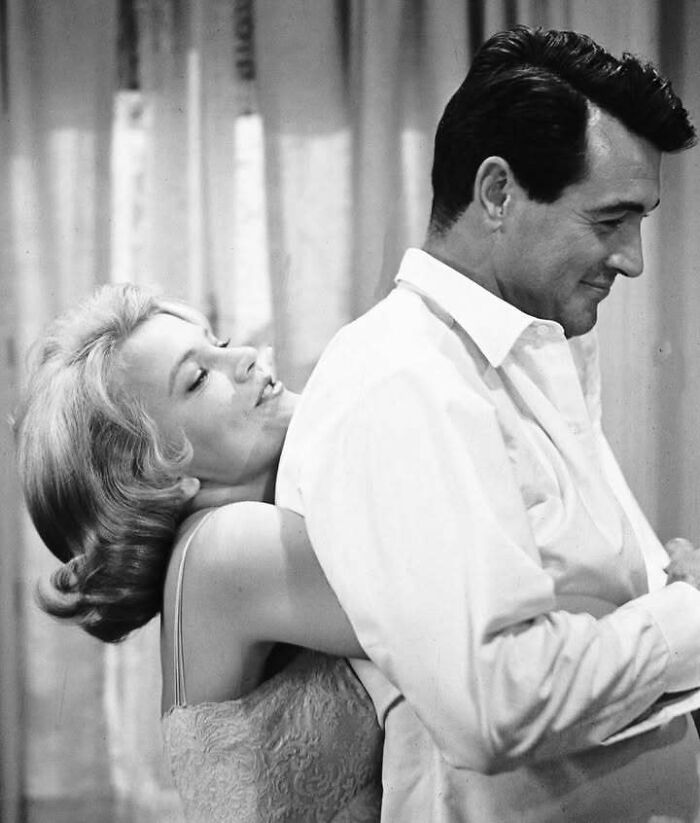
Image source: HistoricLensStories
#45
Alain Delon and Romy Schneider’s relationship remains one of the most legendary romances in European cinema, captivating fans during the 1960s and beyond. The couple first met in the late 1950s and quickly became one of the most glamorous pairs of the era, symbolizing the allure of French and German cinema. Their intense chemistry on and off screen made them icons of beauty, sophistication, and cinematic passion. Even after their breakup in the late 1950s, their connection endured, both personally and professionally, culminating in their unforgettable reunion for the film La Piscine (1969). This project allowed them to channel past emotions into their performances, creating a tension and authenticity that resonated deeply with audiences.
La Piscine, directed by Jacques Deray, became an emblem of French psychological cinema and romantic intrigue. Filmed at the luxurious Côte d’Azur, the movie’s narrative of jealousy, desire, and betrayal mirrored, in many ways, the real-life intensity between Delon and Schneider. Behind the scenes, the crew observed a mix of nostalgia, tenderness, and unresolved feelings, making the set a charged environment where reality and performance intertwined. Romy Schneider herself would later express, “I loved Alain. I still love him. I always will,” a testament to the enduring emotional impact of their relationship. Delon’s personal devotion was equally profound, as evidenced by his lifelong keepsake of her photograph and his solitary vigil at her coffin in 1982, highlighting a love that transcended time and tragedy.
Their story has left an indelible mark on cinema history, blending on-screen artistry with real-life romance. Alain Delon and Romy Schneider’s legacy continues to inspire fans and filmmakers alike, epitomizing the golden age of European cinema where passion, glamour, and artistry converged. Beyond their iconic films, their relationship represents timeless human emotion—love, longing, and devotion—that resonates across generations. Even decades later, images and anecdotes from their lives evoke the elegance, magnetism, and intensity of two stars whose bond, both professional and personal, remains unforgettable in cinematic history.
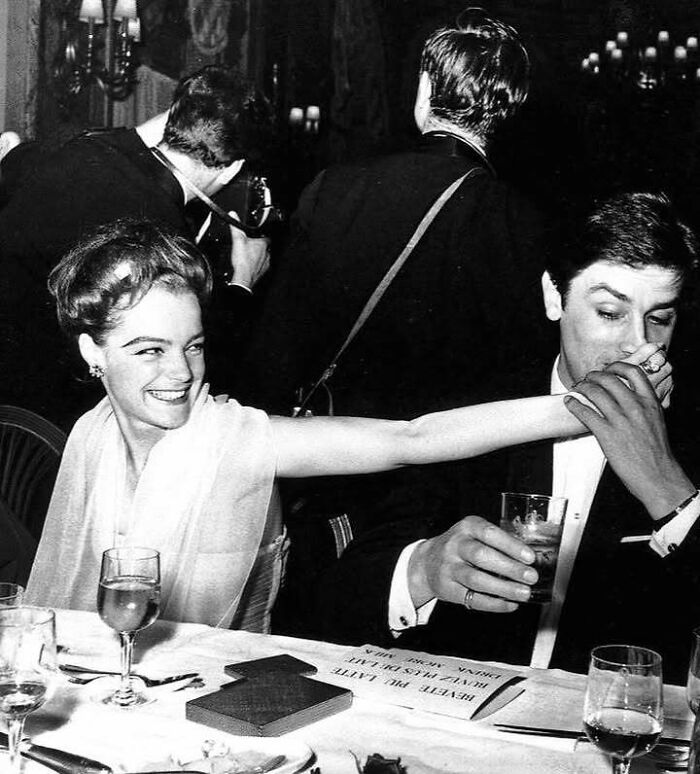
Image source: HistoricLensStories
#46
In 2012, Vincent Cassel and Monica Bellucci stood as one of cinema’s most magnetic couples, both on and off screen. Photographed by Vincent Peters, their timeless elegance and chemistry radiated through black-and-white portraiture, embodying the golden balance between European sophistication and international stardom. By this time, Bellucci had already been celebrated as one of Italy’s most iconic actresses and models, having starred in films such as Malèna (2000) and The Passion of the Christ (2004), while Cassel had established himself as a versatile French actor in acclaimed works including La Haine (1995), Eastern Promises (2007), and Black Swan (2010).
Their marriage, which began in 1999, symbolized a true cultural union—Bellucci’s Italian glamour alongside Cassel’s French intensity. Together, they collaborated in films such as L’Appartement (1996) and Gaspar Noé’s controversial Irreversible (2002), where their raw performances left an indelible mark on world cinema. By 2012, they were fixtures at international film festivals, fashion houses, and art circles, admired not just as individuals but as a couple who embodied charisma and style. Their photographs from this era reflect a moment where personal and professional lives intertwined seamlessly, making them subjects of fascination for the media and beloved by audiences worldwide.
Historically, their partnership came to define a generation of European cinema in the late 1990s and early 2000s. Though they would announce their separation in 2013, the legacy of Cassel and Bellucci together continues to inspire modern discussions about celebrity culture, fashion, and international film history. The 2012 portrait captures not only the allure of two global stars but also the cultural context of their union at a time when cinema was becoming increasingly international, blurring boundaries between Hollywood, Europe, and beyond. It remains a visual reminder of a love story that shaped film, fashion, and popular imagination across decades.
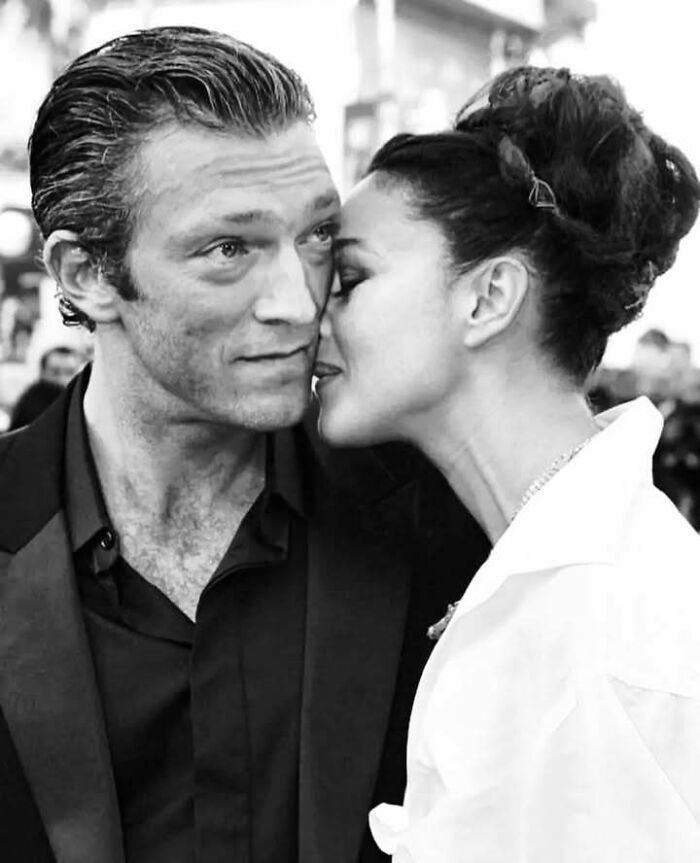
Image source: HistoricLensStories
#47
In 1913, Robert Henry Huzza, born in 1864, and his third wife Anna K. Buster were featured in local exhibitions in Washington state as the smallest living family, a unique attraction that captured the public’s fascination with circus and sideshow performers. That same year, the couple welcomed their son, Buster Huzza, who would continue the family’s legacy in the performance arts. Robert, Anna, and Buster were celebrated locally not just for their size but also for their involvement in circus culture, reflecting the era’s popularity of traveling shows and family exhibitions. The family’s early years in Washington offered both livelihood and recognition, as audiences were eager to witness their exceptional physical traits and performative skills.
Eventually, the Huzza family retired from active circus exhibition and relocated to Florida, where Buster was able to pursue a more conventional upbringing while still remaining connected to performance arts. He attended school and joined a local scout troop, balancing education with his inherited circus talents. As he grew, Buster honed remarkable whip skills, performing with major shows such as Ringling Brothers. His precise abilities—slicing paper into thin strips and even plucking cigarettes from spectators’ mouths with a 10-foot whip—gained him notoriety and respect within the circus community. These acts showcased the remarkable dexterity and discipline cultivated from a young age within a family dedicated to performance arts.
Robert Huzza passed away on December 14, 1929, in Jacksonville, Florida, at the age of 65, with his occupation recorded as a peddler, while Anna outlived him by eight years, passing away in August 1937 in Augusta, Maine. Buster continued the family tradition into mid-century, with records noting him performing as a clown at the Shrine Hospital for Crippled Children in 1953. His career exemplified the continuation of circus artistry through successive generations, blending public spectacle with technical mastery. The Huzza family’s story remains a fascinating chapter in early 20th-century performance history, illustrating both the cultural significance of circus life and the enduring impact of a family dedicated to extraordinary skill and entertainment.
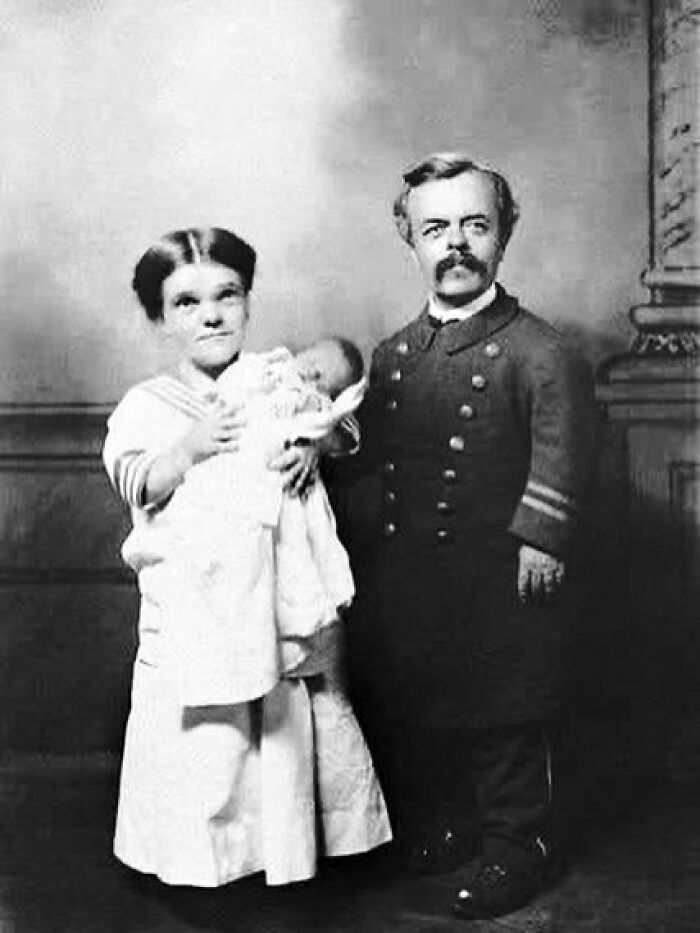
Image source: HistoricLensStories
#48
In the late 1980s, Isabella Rossellini and David Lynch shared both a personal and creative partnership that captured the imagination of cinema enthusiasts around the world. Rossellini, born in 1952 to legendary actors Ingrid Bergman and Roberto Rossellini, had already established herself as a model and actress with a striking presence that combined classic beauty with contemporary sophistication. David Lynch, born in 1946, was emerging as one of the most visionary directors of his generation, known for his surrealist style and atmospheric storytelling. Their relationship coincided with a pivotal period in both of their careers, as Rossellini starred in films that showcased her versatility while Lynch was preparing to create some of his most iconic works.
During this period, Rossellini and Lynch collaborated professionally, most notably in Blue Velvet (1986), where Rossellini portrayed the complex and haunting character Dorothy Vallens. The film was a critical and cultural milestone, blending neo-noir aesthetics with psychological intensity, cementing Lynch’s reputation as a director unafraid to explore the darker sides of human nature. Rossellini’s performance earned widespread acclaim, highlighting her ability to convey vulnerability, sensuality, and inner turmoil with remarkable nuance. Their creative synergy extended beyond the set, with their personal connection influencing their artistic expression and providing a unique dynamic that contributed to the film’s enduring impact.
The late 1980s also marked a period of expanding influence for both artists. Rossellini continued to navigate the worlds of fashion, cinema, and experimental projects, while Lynch began developing the distinctive visual and narrative style that would later define Twin Peaks (1990–1991) and Wild at Heart (1990). Photographs of the couple from this era capture a blend of intimacy, glamour, and artistic magnetism, reflecting the synergy between two creative forces at the height of their powers. Their relationship remains an iconic chapter in both of their lives, illustrating how personal and professional collaboration can shape the cultural and cinematic landscape of a generation.
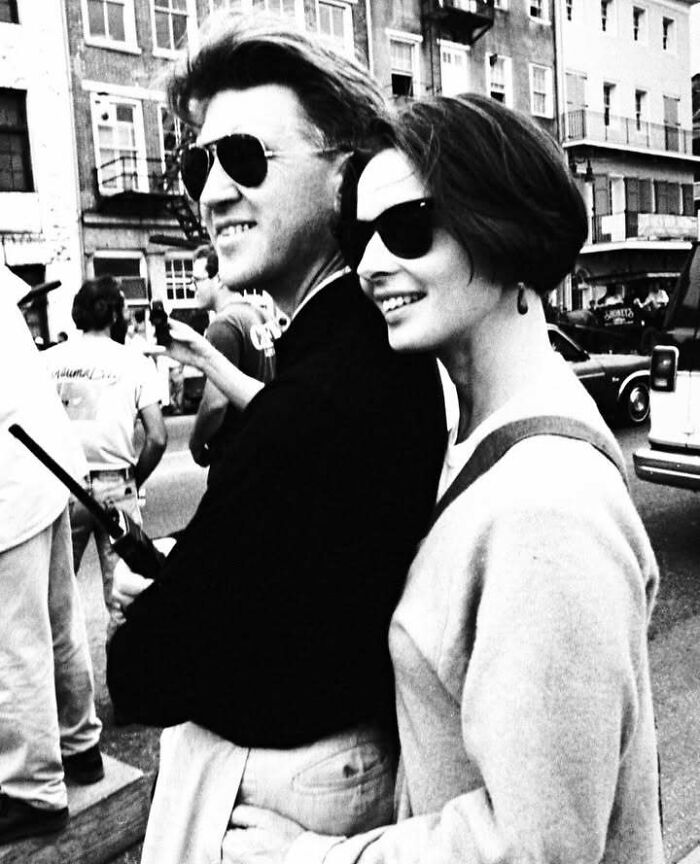
Image source: HistoricLensStories
#49
Photographed by Frank Horvat in 1959, this image captures a nineteen-year-old Anna Karina at the bustling Les Halles market in Paris — a moment suspended between innocence and destiny. Having recently arrived from Denmark with dreams of becoming an actress, Karina was still modeling for advertisements and magazines when Horvat, one of the leading photographers of postwar Europe, discovered her. His lens captured not glamour, but authenticity — the essence of a young woman wandering through the heart of Paris, unaware that she was about to become a defining face of a cinematic revolution. The photo radiates quiet energy, reflecting both the liveliness of Les Halles and the poetic melancholy that would soon define her screen presence.
Paris in 1959 was at the brink of cultural transformation. The Nouvelle Vague was beginning to reshape cinema, challenging the polished studio system with raw, human storytelling. Within a year of this photo, Jean-Luc Godard would cast Anna Karina in Le Petit Soldat (1960), igniting both a creative partnership and a legendary love story. Over the following decade, she starred in some of the movement’s most influential films — A Woman Is a Woman (1961), Vivre Sa Vie (1962), Band of Outsiders (1964), and Pierrot le Fou (1965). Karina’s delicate expressiveness, paired with her understated elegance, made her the emblem of the New Wave: modern, mysterious, and profoundly human.
Frank Horvat’s photograph thus serves as a prophetic document — the calm before the brilliance. Les Halles, the “belly of Paris,” was still a living, breathing market before its demolition in the 1970s, symbolizing the end of an era. In this image, Karina embodies both the city’s realism and its dreams. Her thoughtful gaze and natural grace anticipate the muse she would become — an icon of freedom, youth, and artistry who forever changed the face of French cinema and 20th-century culture.
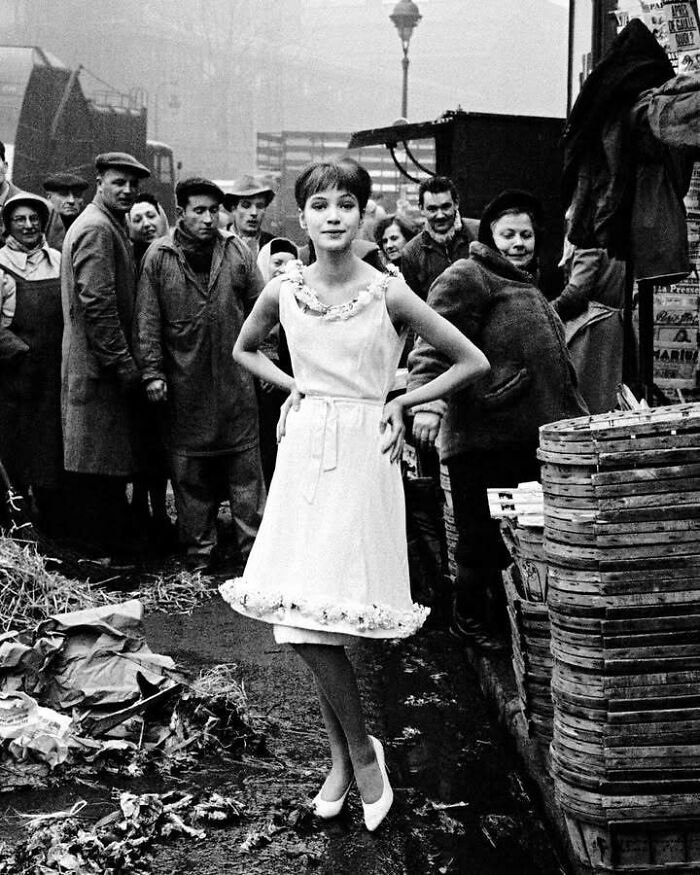
Image source: HistoricLensStories
#50
Richard Gere, born on August 31, 1949, in Philadelphia, Pennsylvania, rose to become one of Hollywood’s most recognizable and enduring leading men. His career breakthrough came in the late 1970s and early 1980s with films like American Gigolo (1980), which cemented his image as a magnetic screen presence. Soon after, An Officer and a Gentleman (1982) turned him into a global star, with the film’s romantic storyline and iconic scenes becoming defining moments of 1980s cinema. By the 1990s, Gere reached new heights with Pretty Woman (1990) alongside Julia Roberts, a film that not only became a box office phenomenon but also one of the most beloved romantic comedies of all time.
Throughout the 1990s and 2000s, Gere expanded his repertoire, moving seamlessly between genres. He starred in political dramas like Red Corner (1997), thrillers such as Primal Fear (1996), and musicals like Chicago (2002), for which he won a Golden Globe for Best Actor. His ability to balance charm, intensity, and vulnerability gave him staying power in an industry known for constant reinvention. Beyond his acting, Gere’s career has also been defined by his dedication to humanitarian and spiritual causes. A practicing Buddhist, he has been a prominent supporter of human rights, particularly advocating for Tibet and working closely with the Dalai Lama. His philanthropic efforts have made him a respected figure not only in entertainment but also in global activism.
In more recent years, Gere has taken on selective projects, focusing on roles that align with his artistic values rather than mainstream appeal. His performances in films like Arbitrage (2012) showcased his depth as a seasoned actor. Simultaneously, he has continued to dedicate time to humanitarian initiatives, from AIDS awareness to refugee support. Celebrating his birthday today highlights not only a career spanning more than four decades but also a life committed to compassion, creativity, and social justice. Richard Gere remains a symbol of enduring talent, timeless charisma, and a star whose impact extends far beyond the screen.
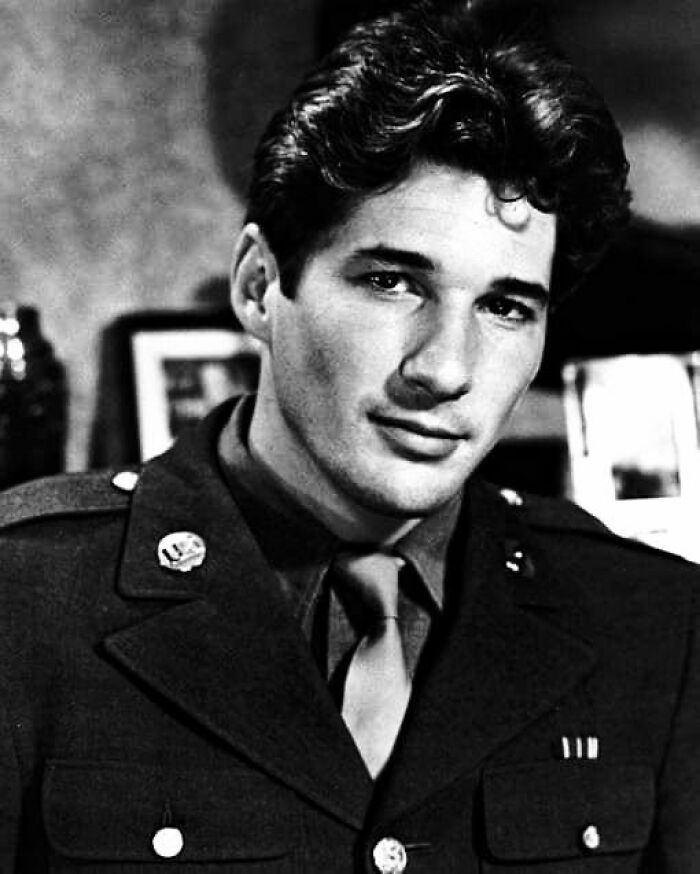
Image source: HistoricLensStories
#51
River Phoenix, born August 23, 1970, in Madras, Oregon, was one of the most talented and promising actors of his generation, known for his depth, intensity, and authenticity on screen. Rising to fame in the 1980s, Phoenix gained early recognition for his performances in television and film, but it was his breakout role in Stand by Me (1986) that established him as a critically acclaimed young actor capable of conveying profound emotion and realism. Beyond his acting career, Phoenix was known for his philosophy toward art and life, emphasizing authenticity, empathy, and a dedication to truth in performance, as reflected in his statement about creating work “most true to life” and driven by caring rather than just career ambitions.
During the late 1980s and early 1990s, Phoenix continued to take on roles that challenged him artistically and socially, including performances in My Own Private Idaho (1991) and Dogfight (1991). He was deeply engaged with causes outside of acting, including environmentalism, animal rights, and humanitarian efforts, reflecting his commitment to living consciously and purposefully. Colleagues and critics often noted that his approach to acting transcended conventional careerism; River sought roles that explored human complexity and social truth, earning respect for both his craft and his ethical approach to life. His unique philosophy made him a compelling figure in Hollywood, admired for combining star power with a sincere moral and artistic compass.
Tragically, River Phoenix passed away on October 31, 1993, at the age of 23, leaving behind a legacy that continues to influence actors, filmmakers, and fans worldwide. His brief but remarkable career remains a testament to the power of artistic integrity, personal conviction, and empathy in creative work. Photographs and interviews from his life capture the intensity, sensitivity, and vision that defined him, reminding the world of an artist who strove not for fame alone but for meaningful expression and human connection. Today, Phoenix is celebrated as a symbol of authenticity, artistic devotion, and the enduring impact of one of Hollywood’s most luminous talents.
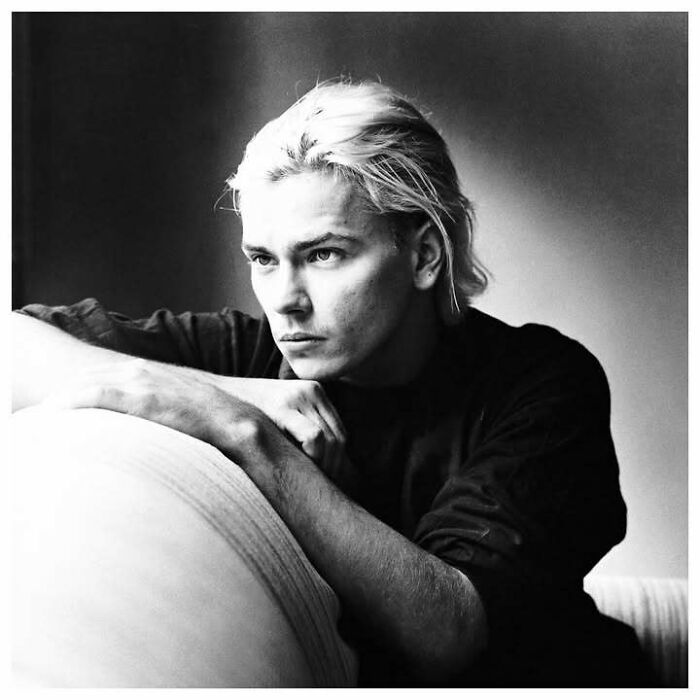
Image source: HistoricLensStories
#52
Released in 1988, A Cry in the Dark brought international attention to the harrowing true story of Lindy Chamberlain and the tragic passing of her baby daughter Azaria at Uluru in Australia. Starring Meryl Streep as Lindy and Sam Neill as Michael Chamberlain, the film dramatized the events surrounding the Chamberlains’ ordeal, including the media frenzy, public scrutiny, and legal battles that followed. Streep’s portrayal of Lindy Chamberlain earned widespread acclaim, capturing both the anguish of a grieving mother and the resilience required to endure intense public skepticism. Sam Neill’s performance added depth, highlighting the strain on the family and their unwavering support for one another in the face of adversity.
The 1988 film was directed by Fred Schepisi and carefully recreated the circumstances surrounding the widely publicized case, emphasizing themes of justice, truth, and societal judgment. The infamous line, “A dingo ate my baby!” became etched in popular culture, symbolizing both the tragedy of the incident and the sensationalized media coverage that captivated audiences worldwide. A Cry in the Dark explored the tension between personal grief and public perception, illustrating how misinformation and prejudice can impact lives and legal proceedings. The film’s cinematography and faithful depiction of the Australian landscape further grounded the story, allowing viewers to understand the environmental and cultural context of the events.
Today, A Cry in the Dark is remembered not only for its compelling performances by Meryl Streep and Sam Neill but also as an important cinematic portrayal of a landmark legal and social event. The film remains a reference point in discussions of media influence, justice, and the endurance of individuals facing extraordinary public pressure. Streep’s performance continues to be celebrated as one of her most memorable roles, and the movie’s impact endures in both popular culture and historical discourse, offering audiences insight into a real-life story of tragedy, resilience, and the pursuit of truth in 1980s Australia.
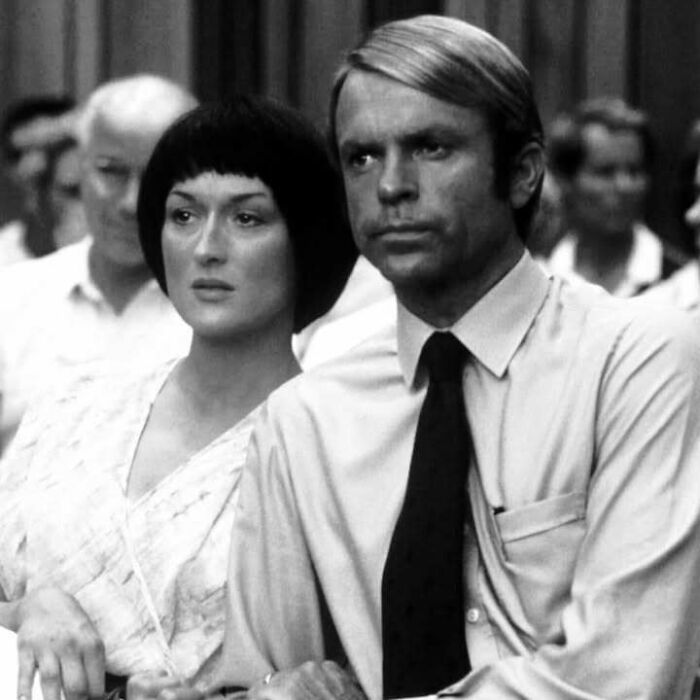
Image source: HistoricLensStories
 Follow Us
Follow Us




